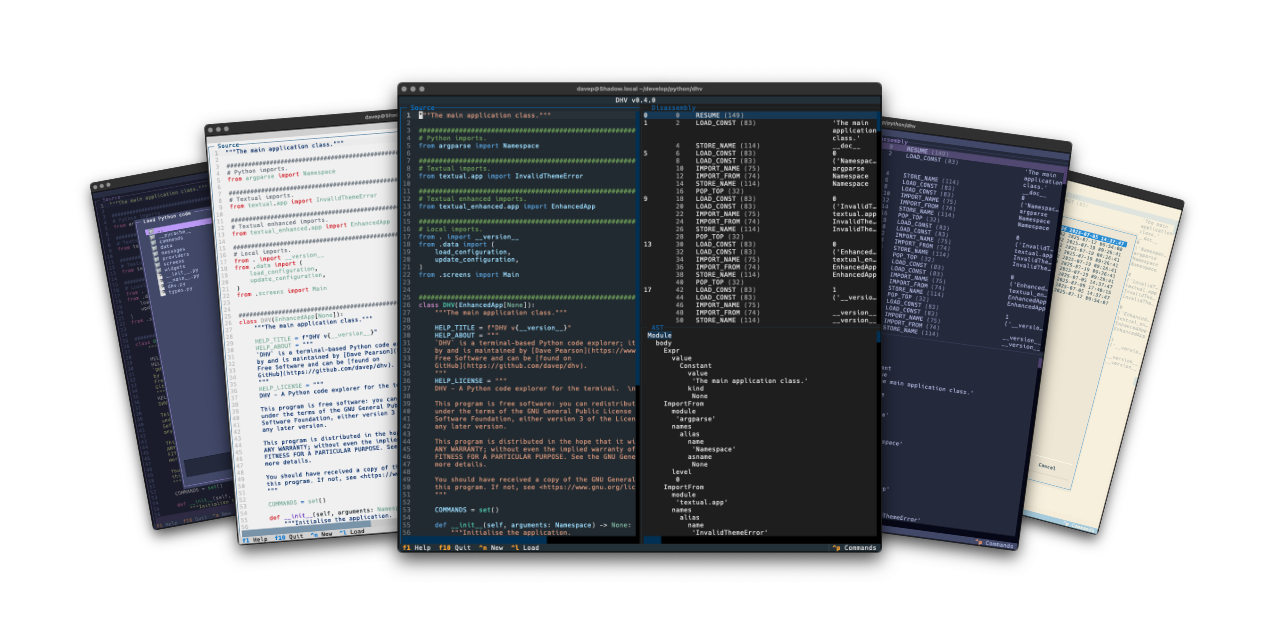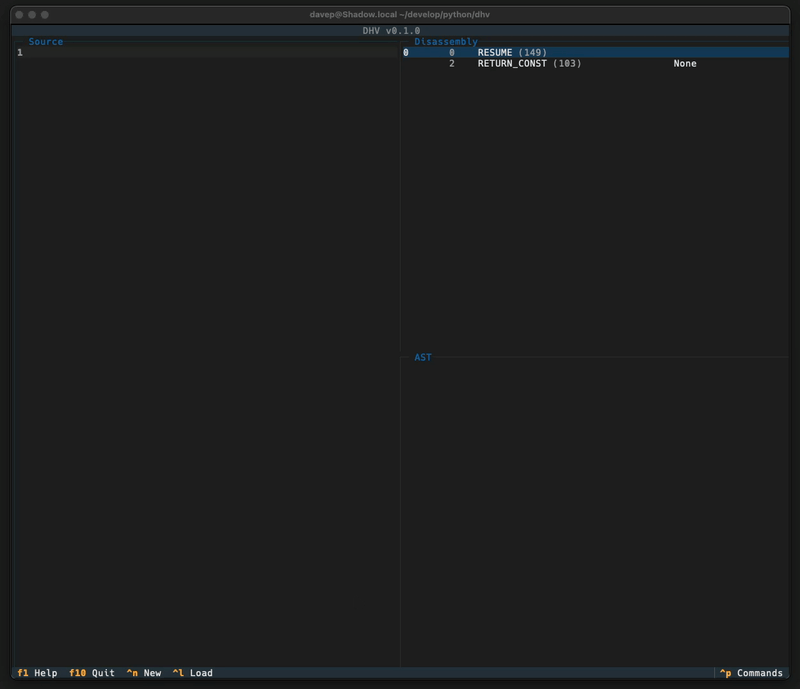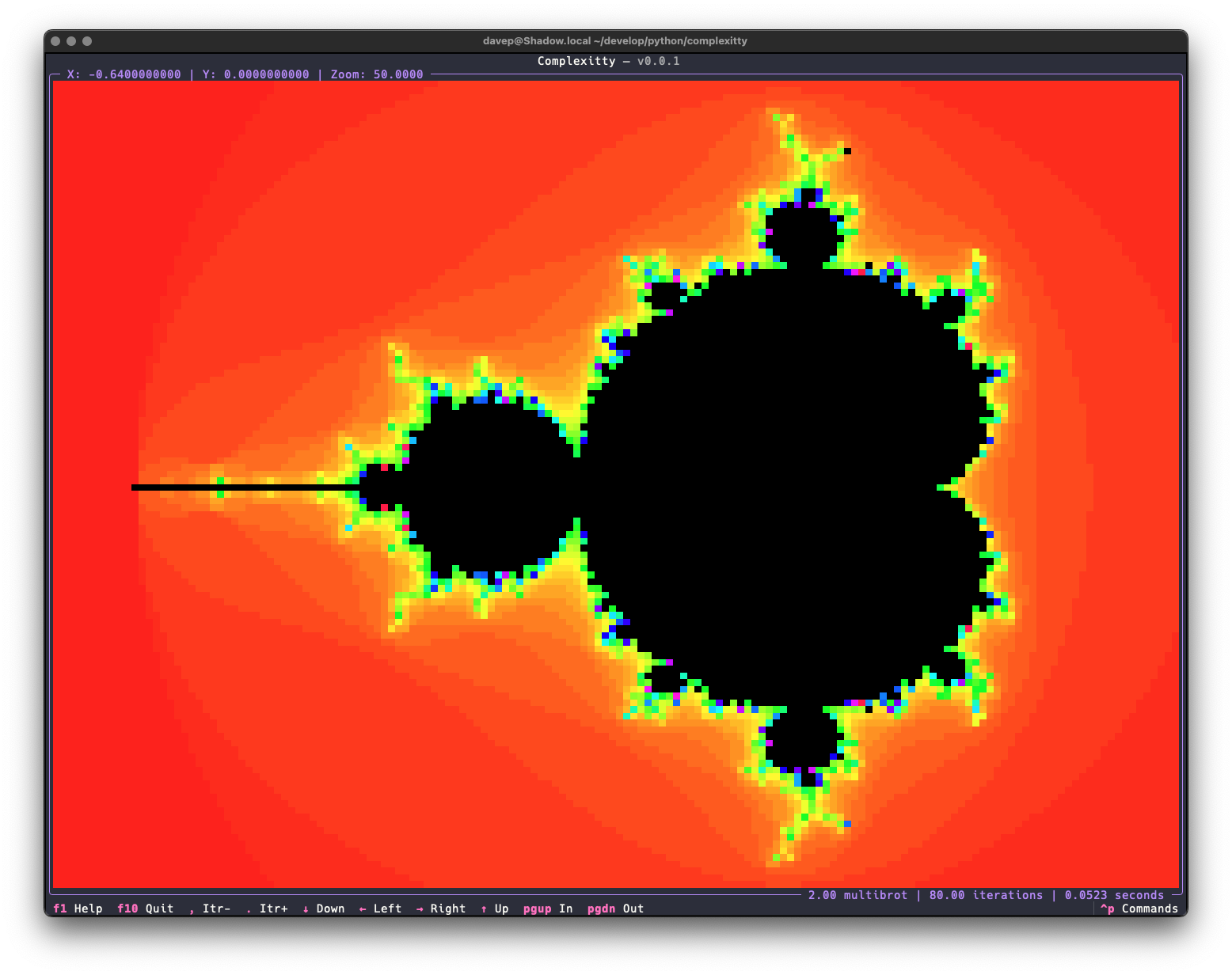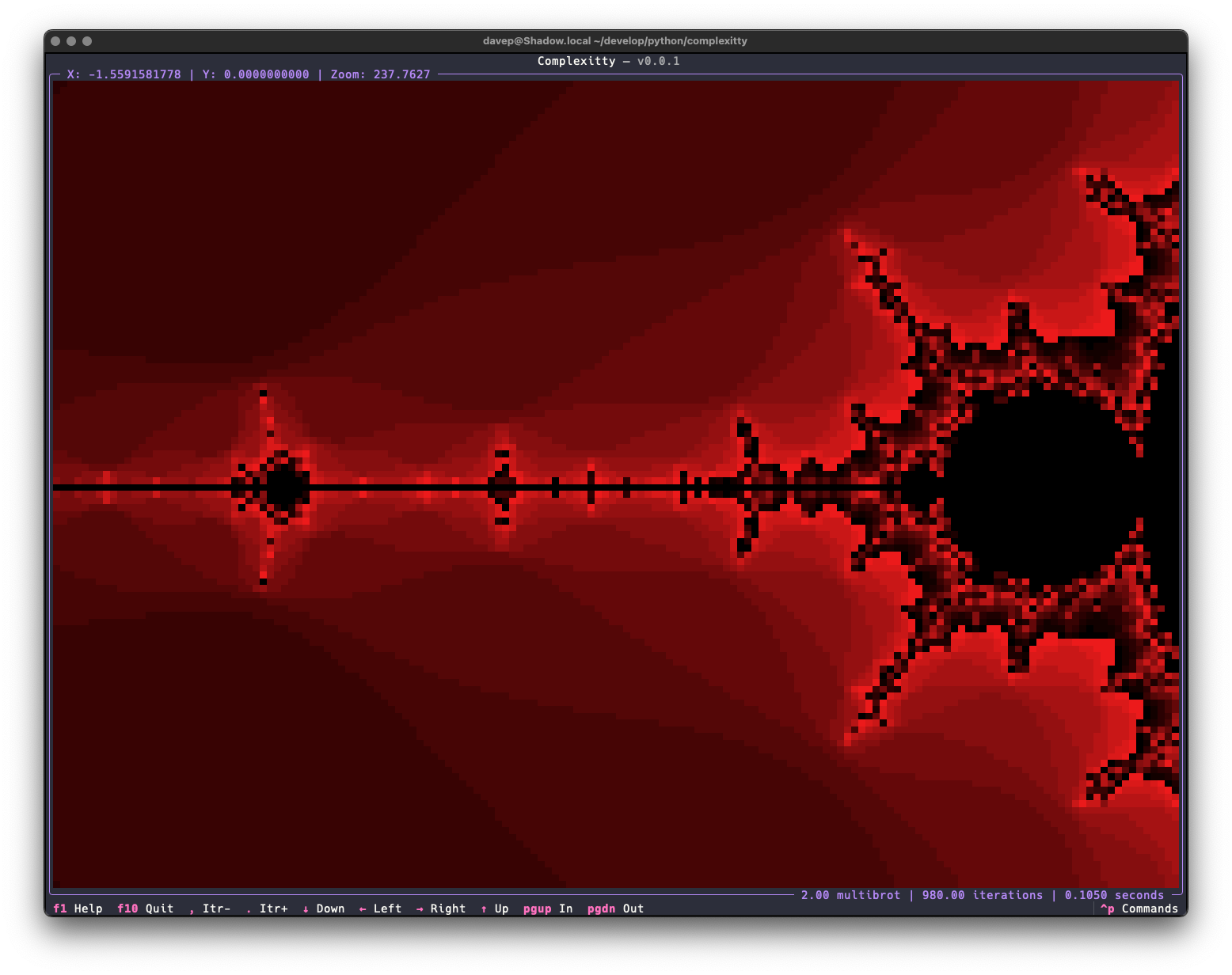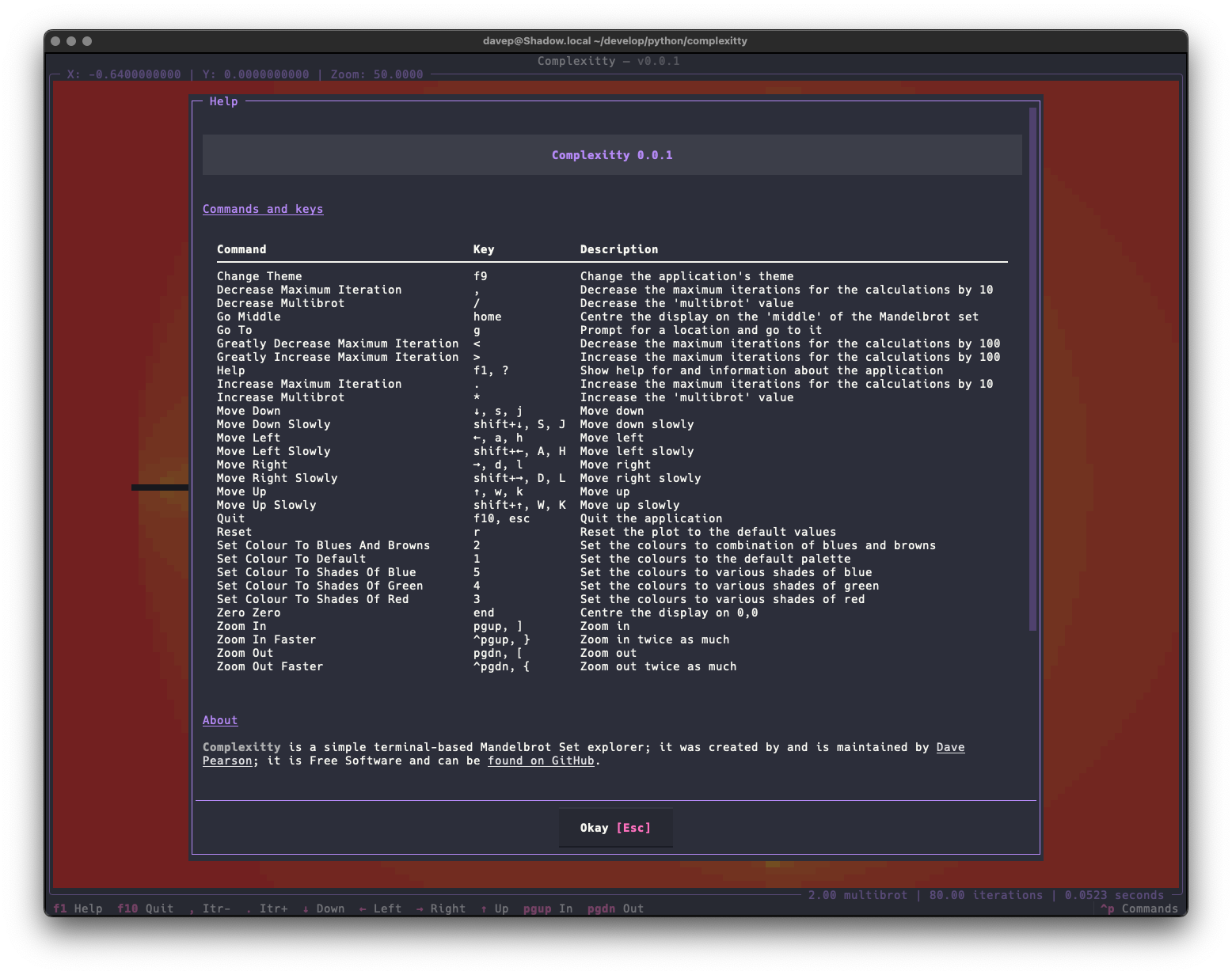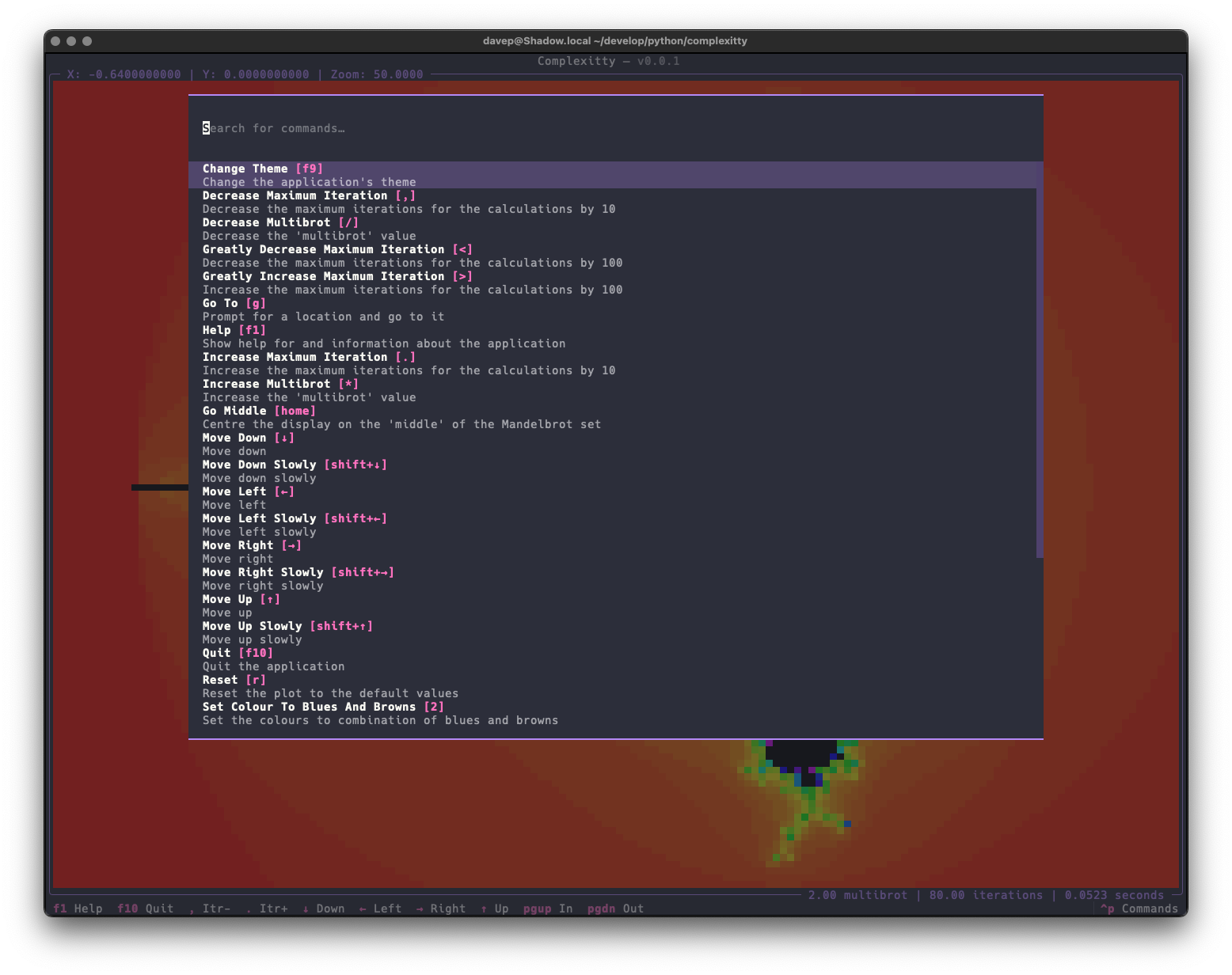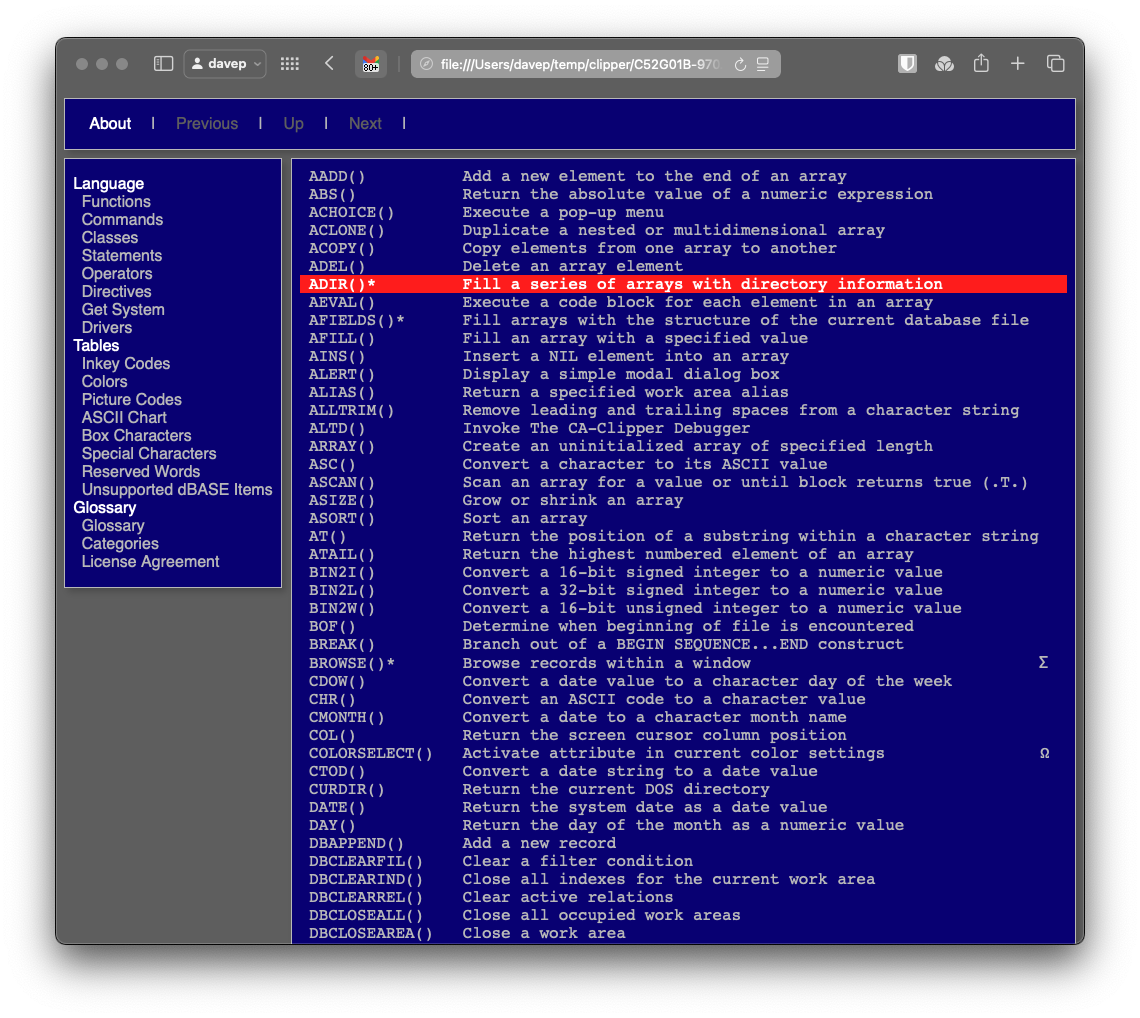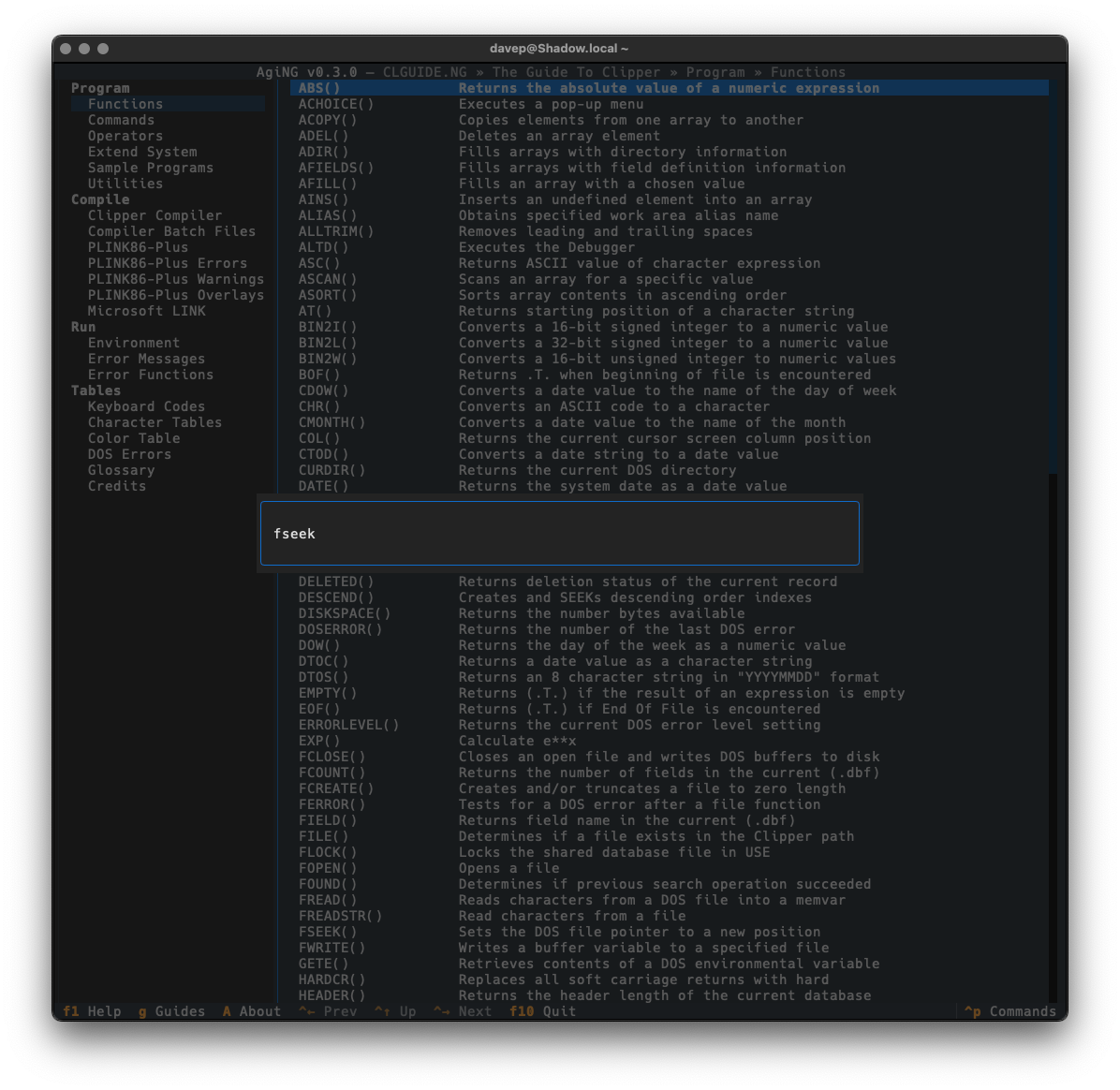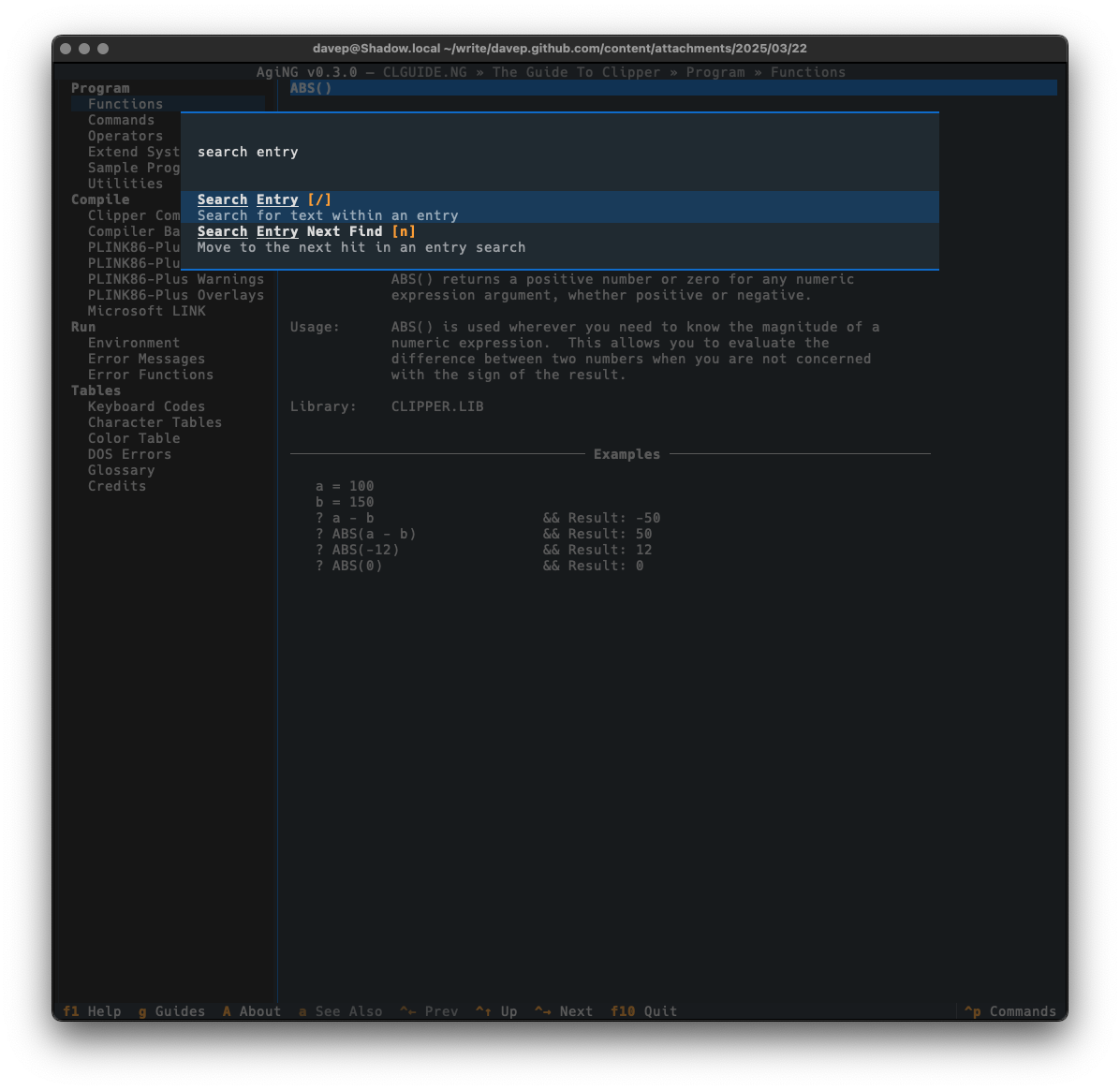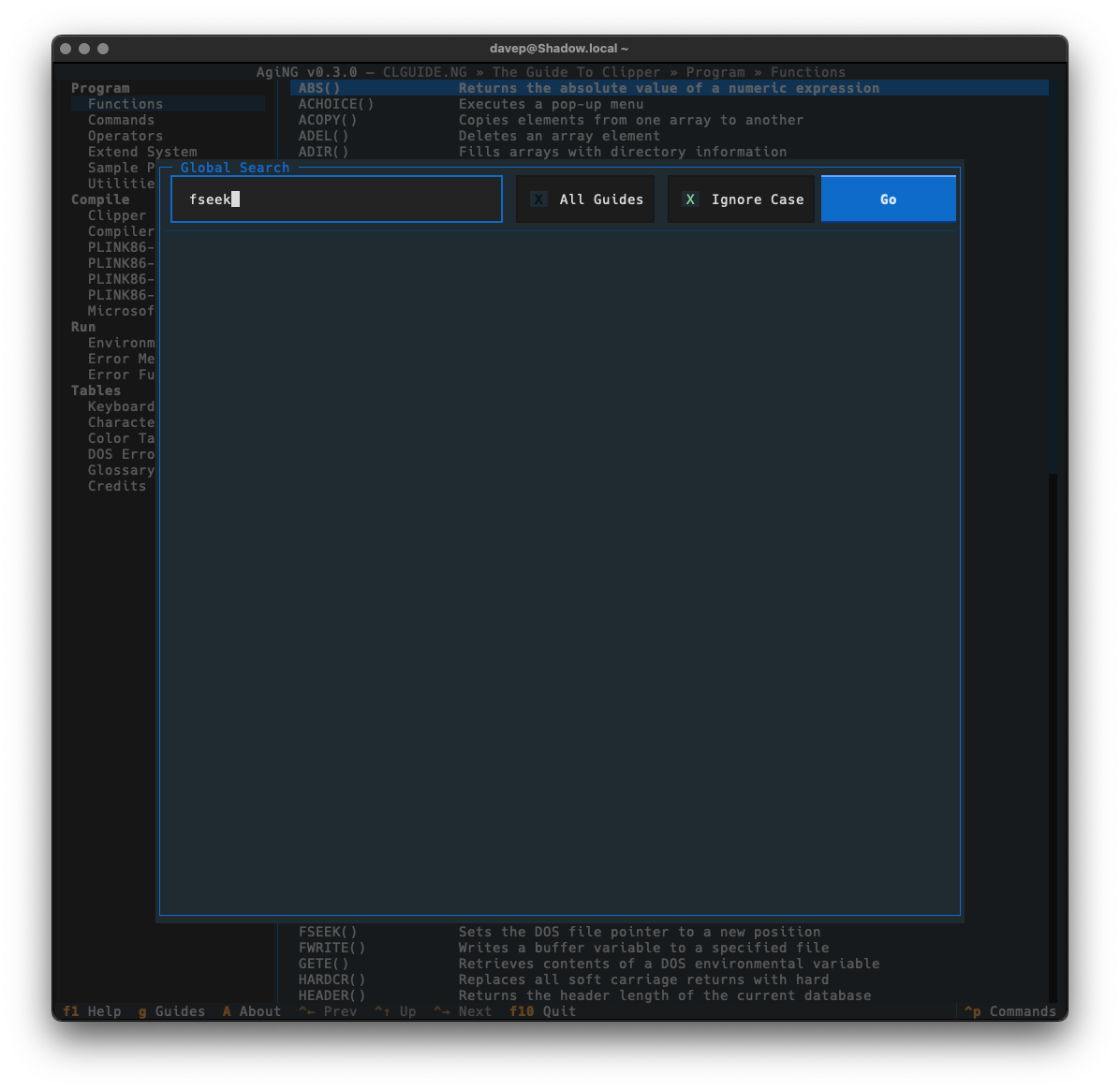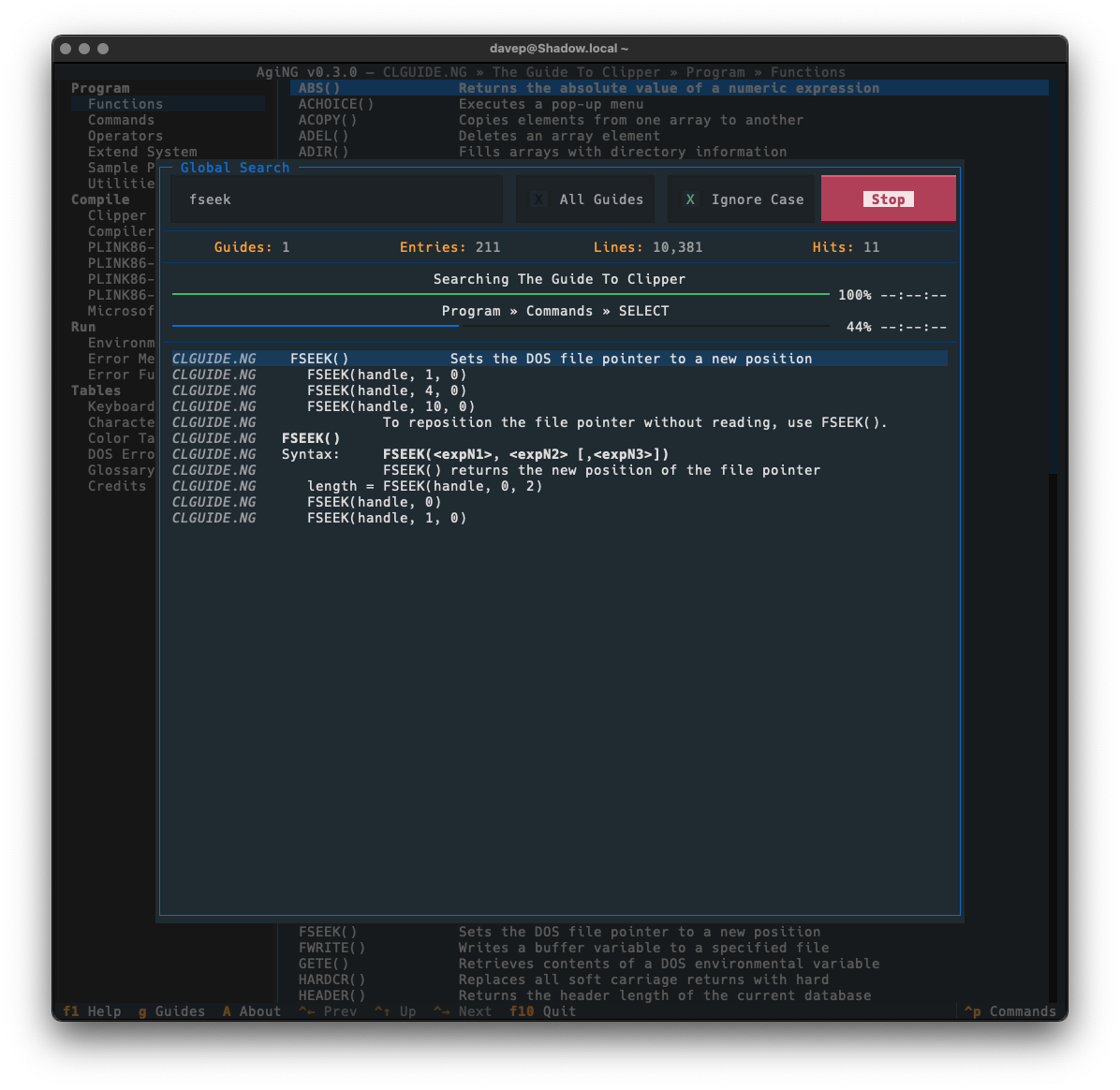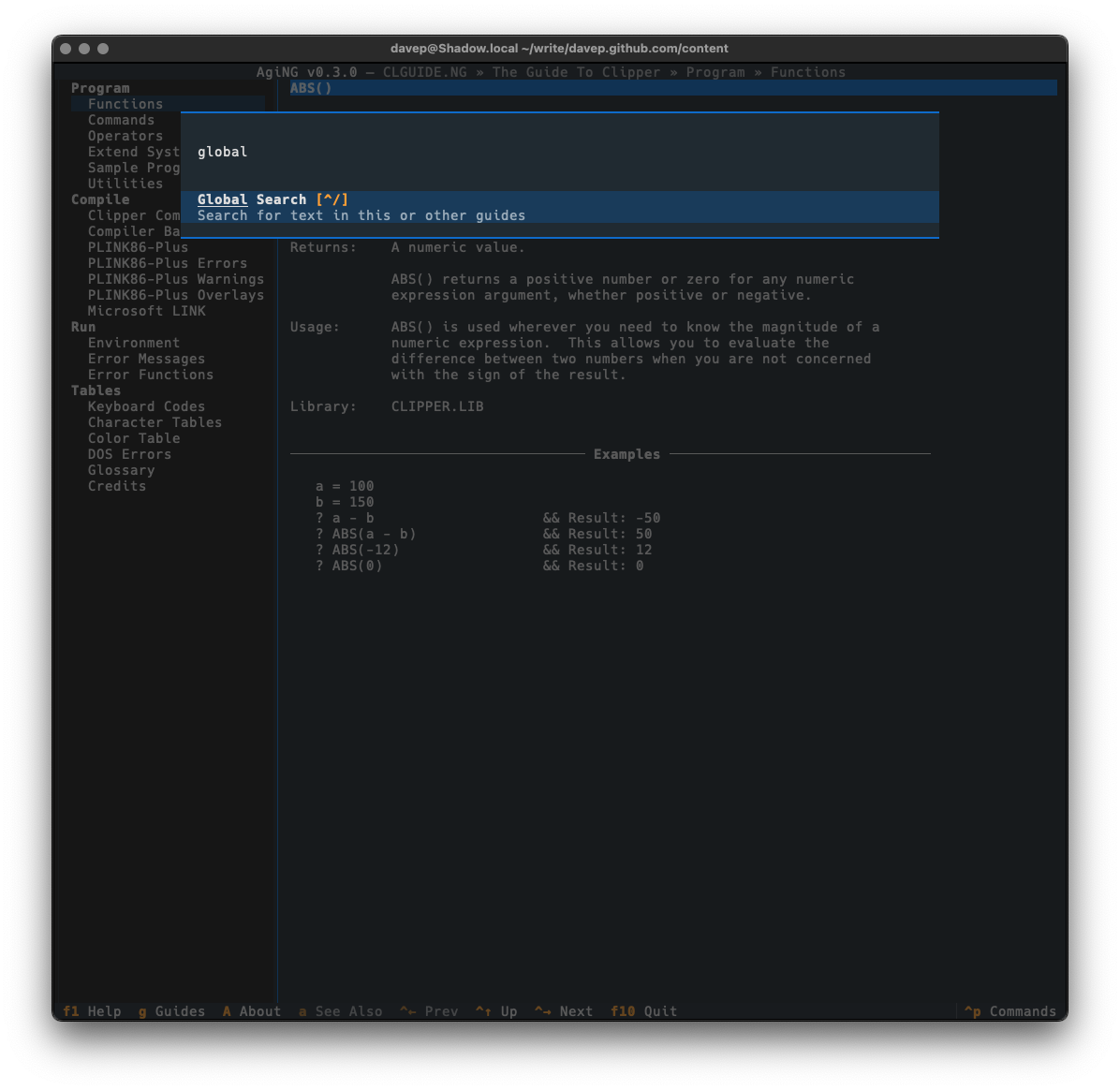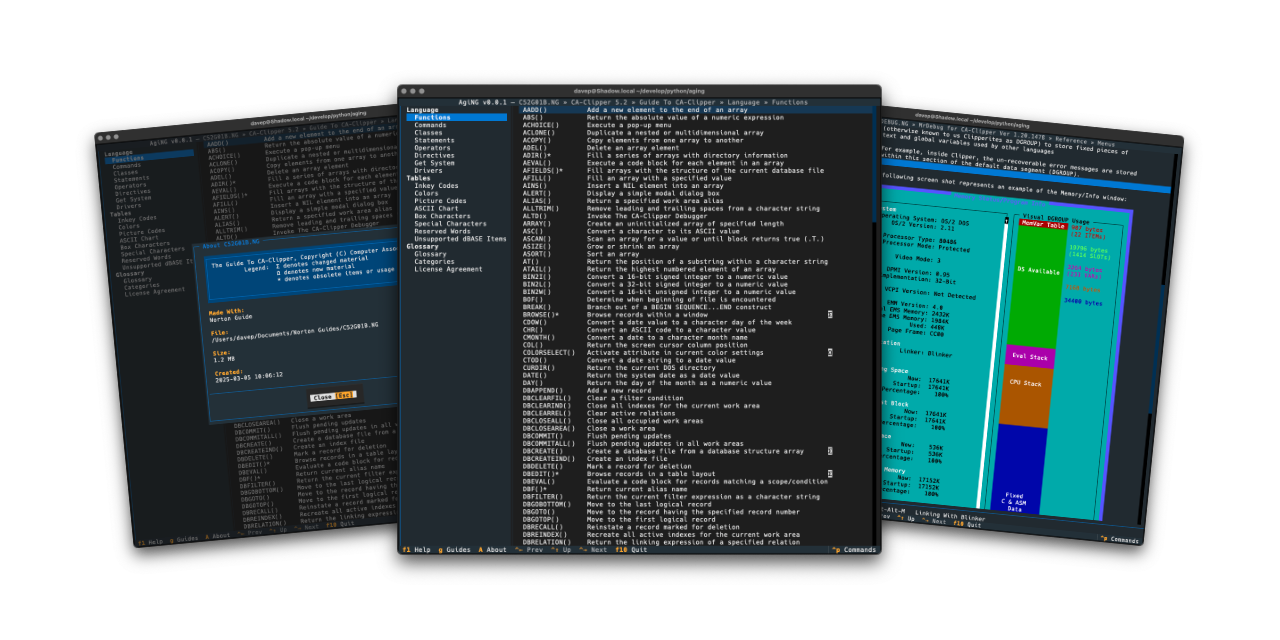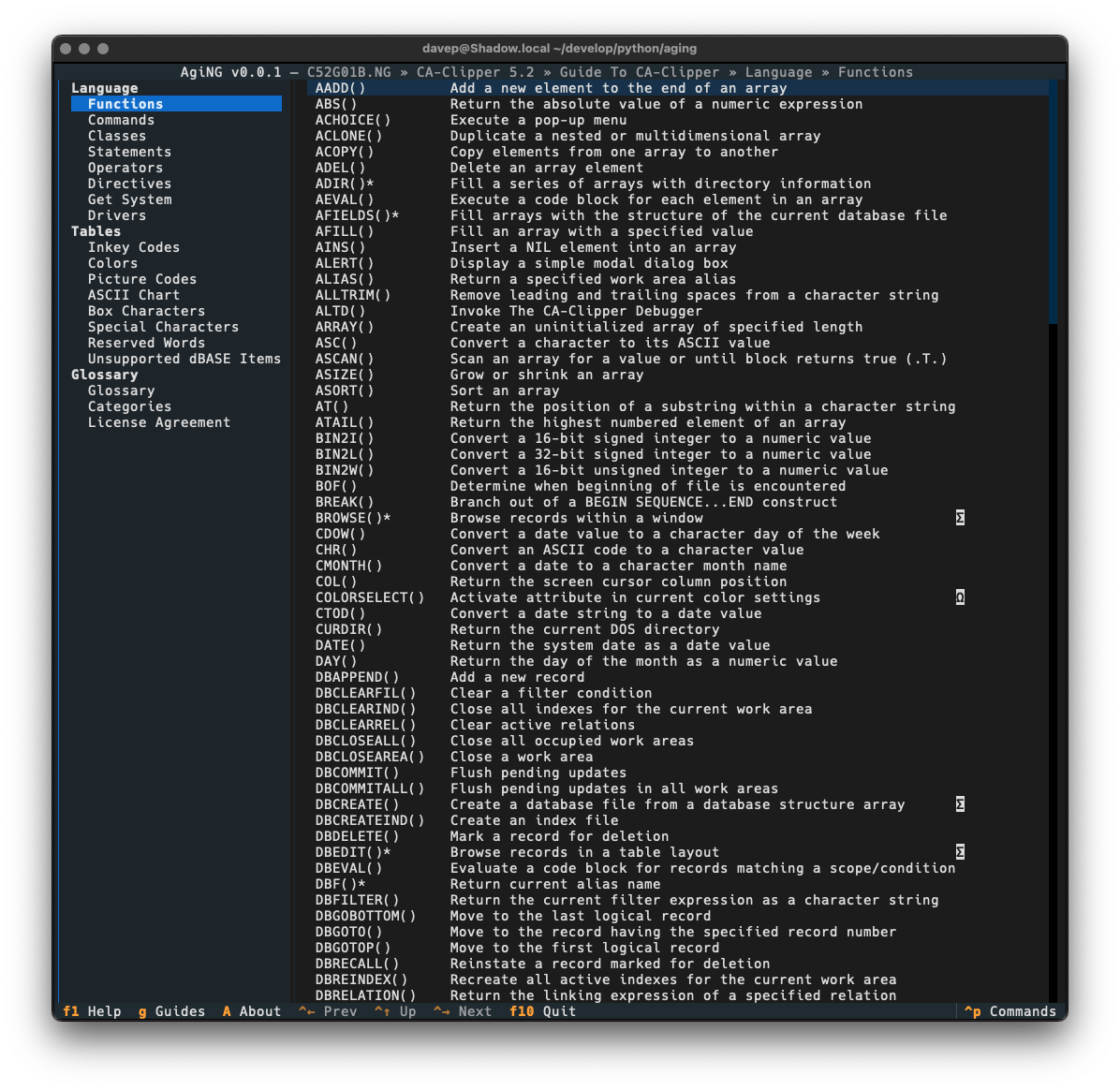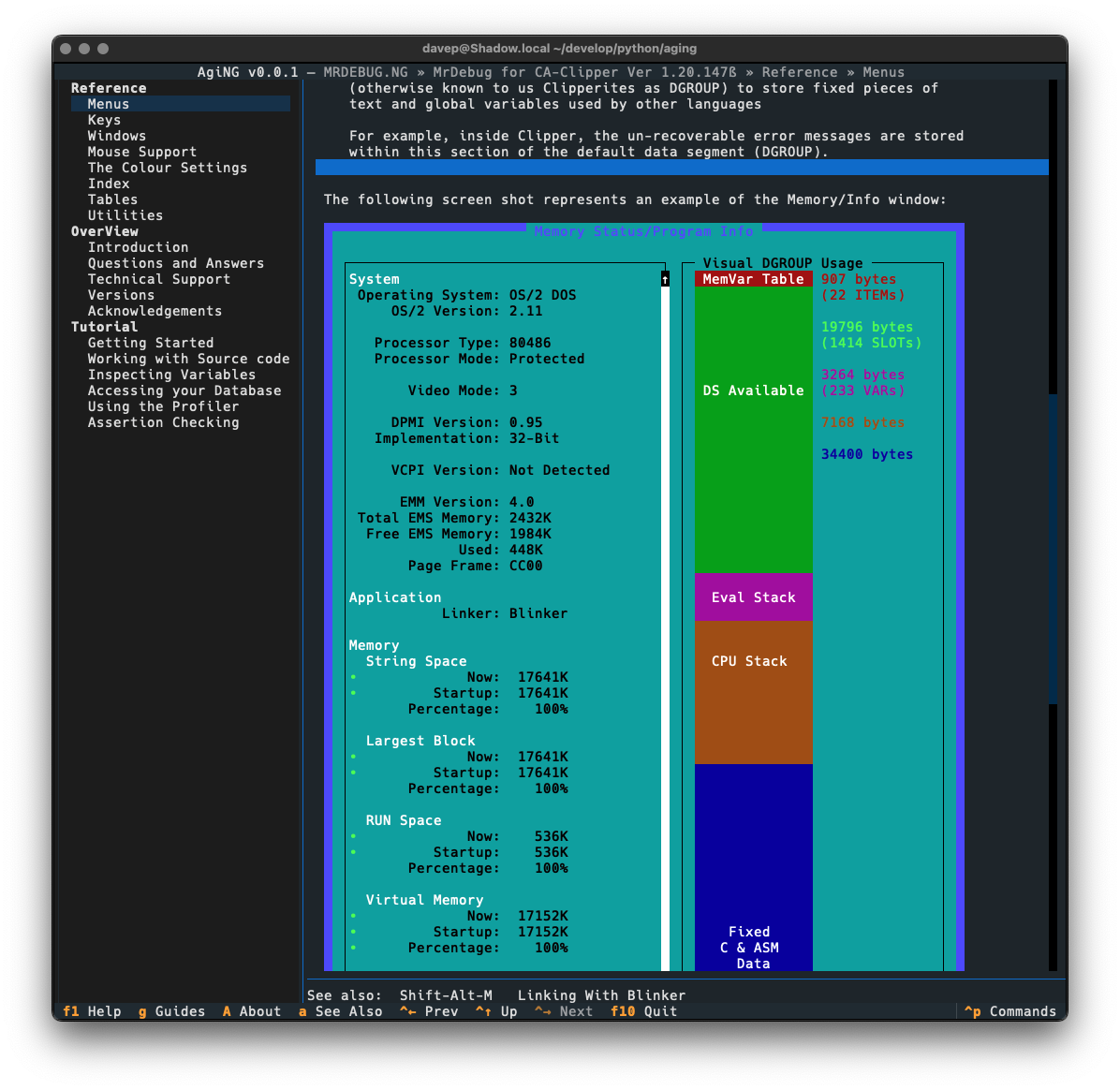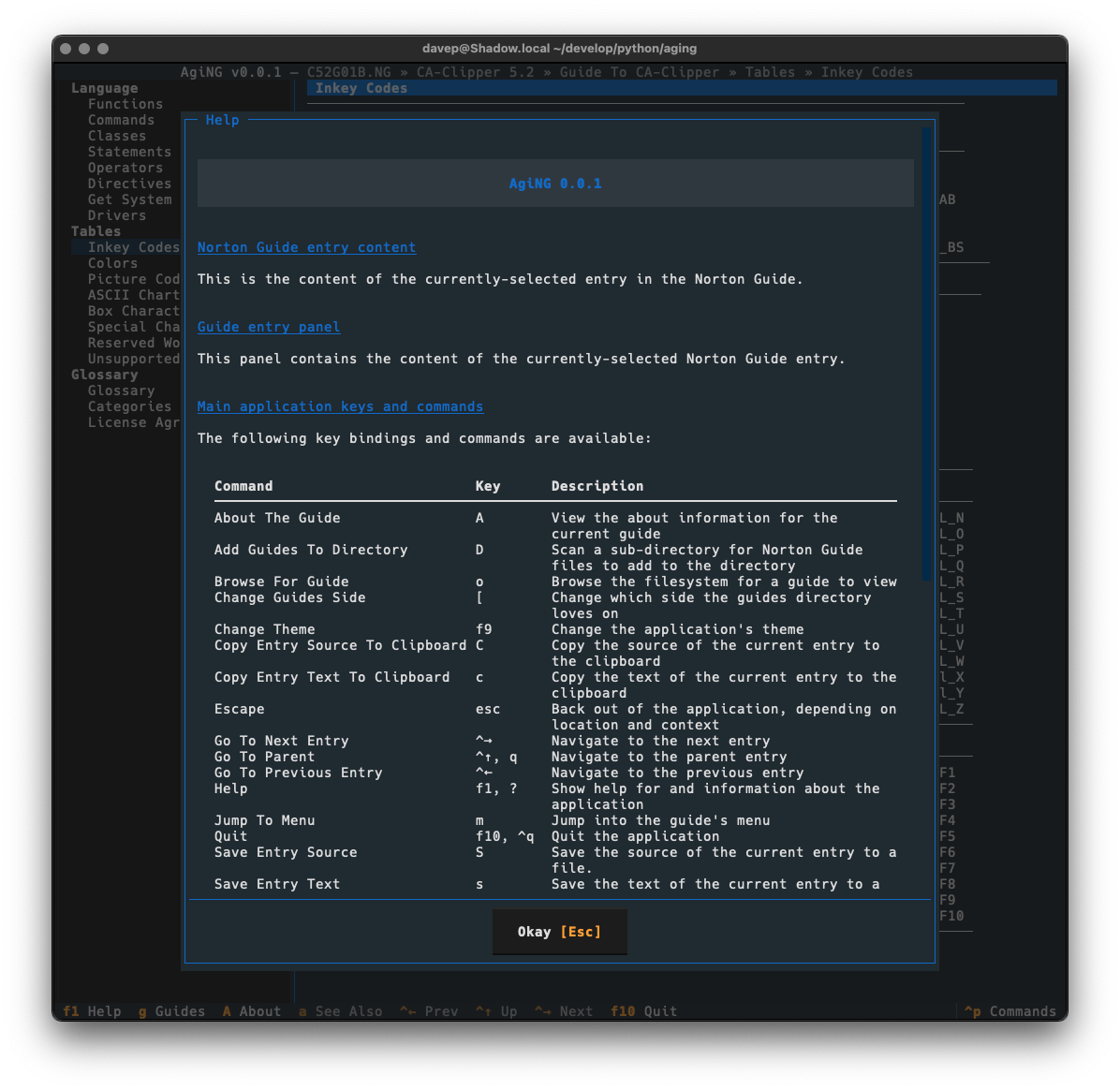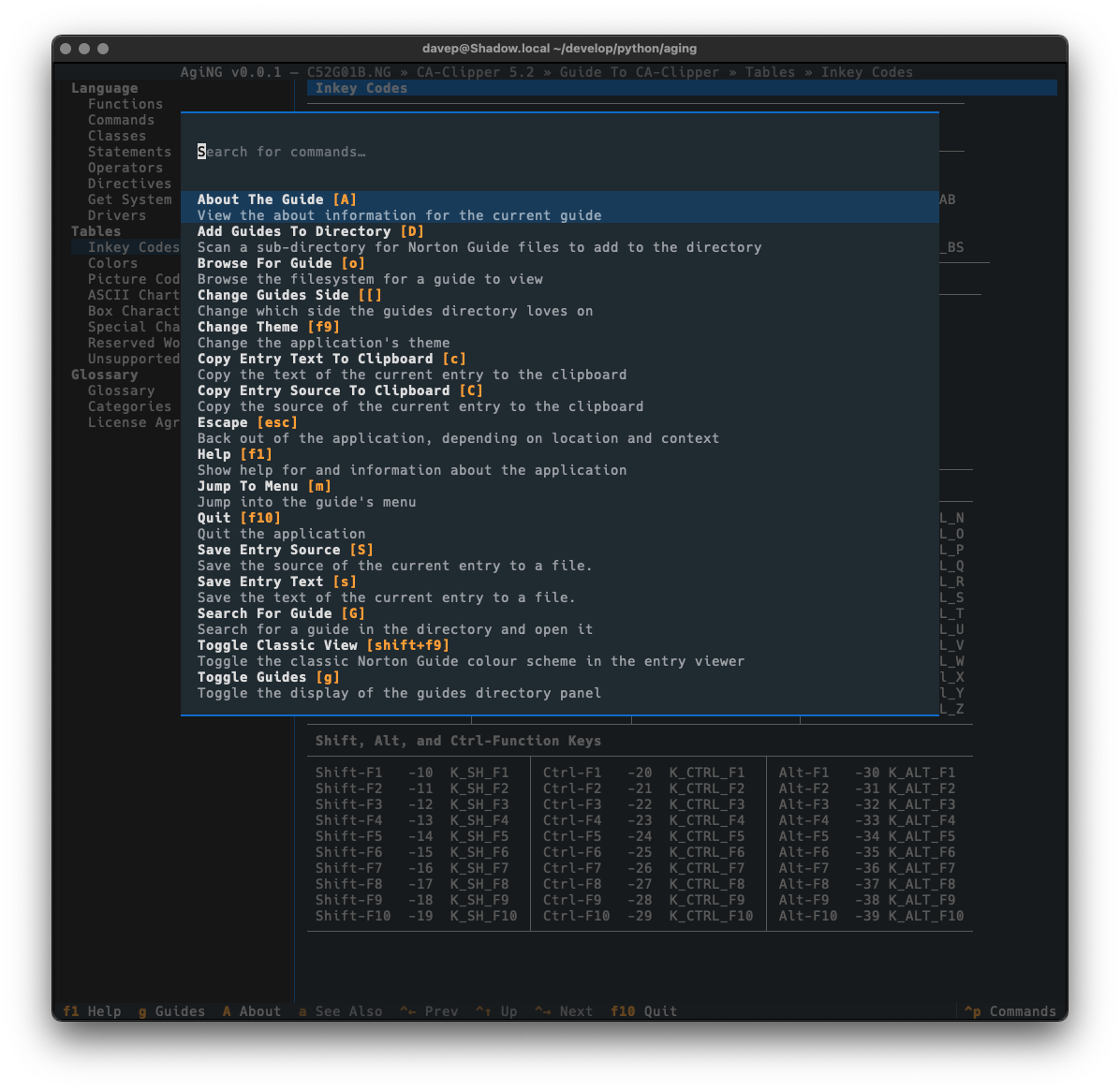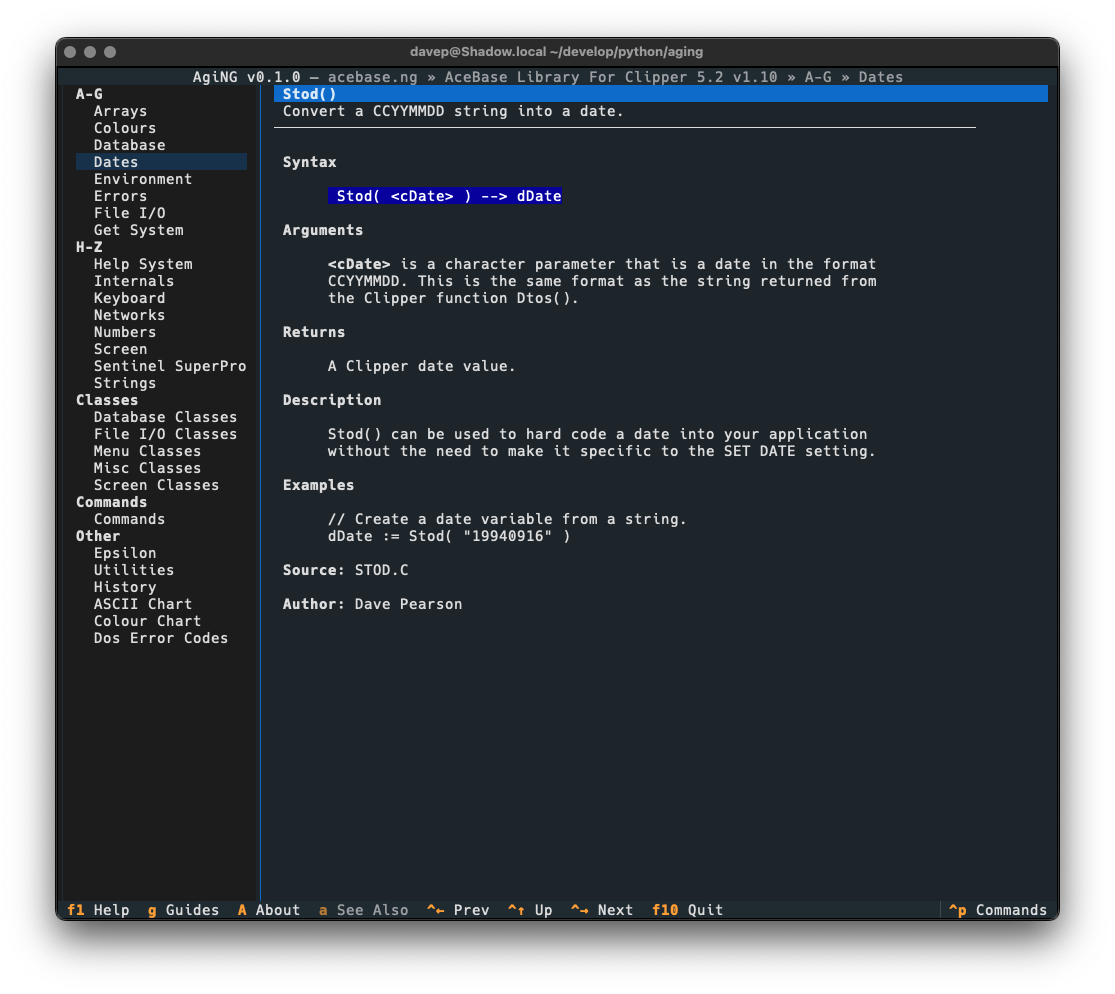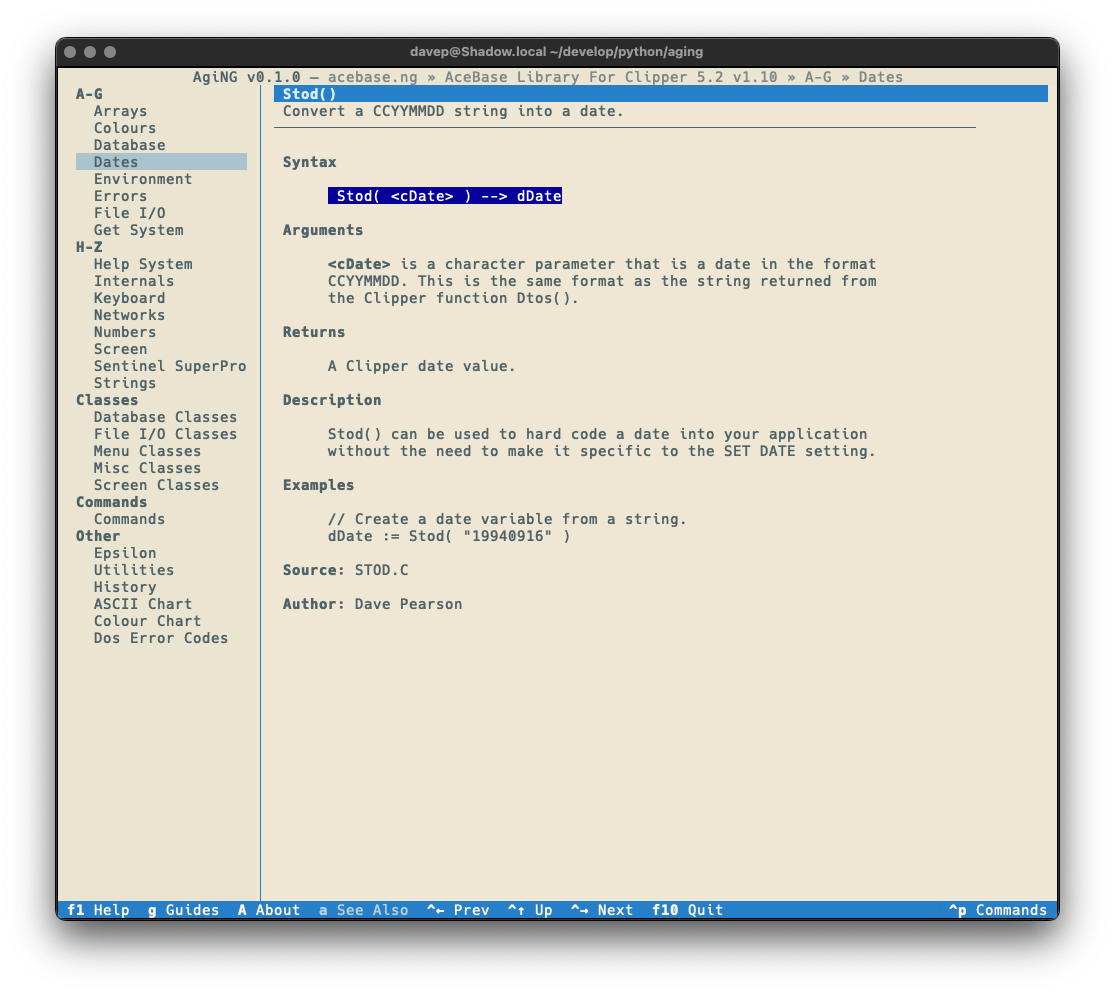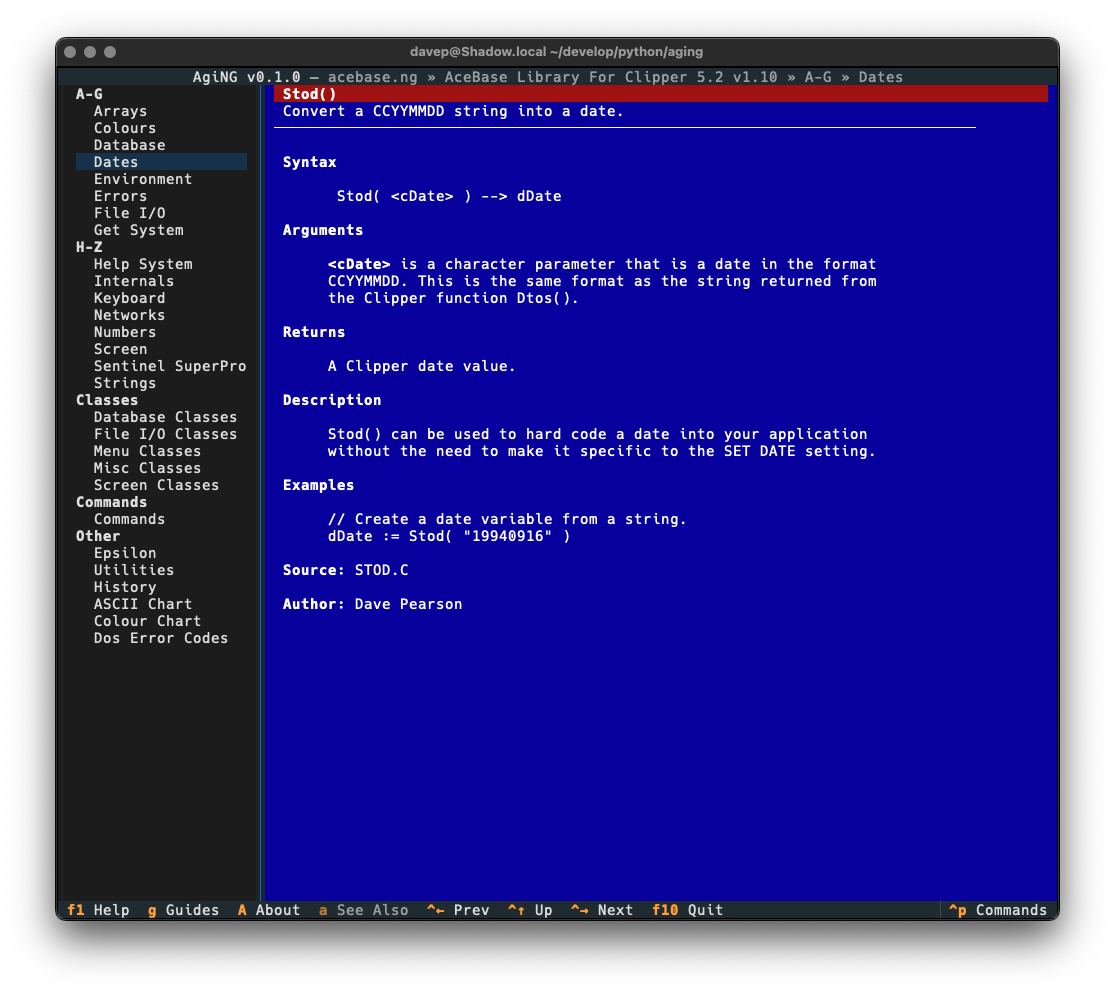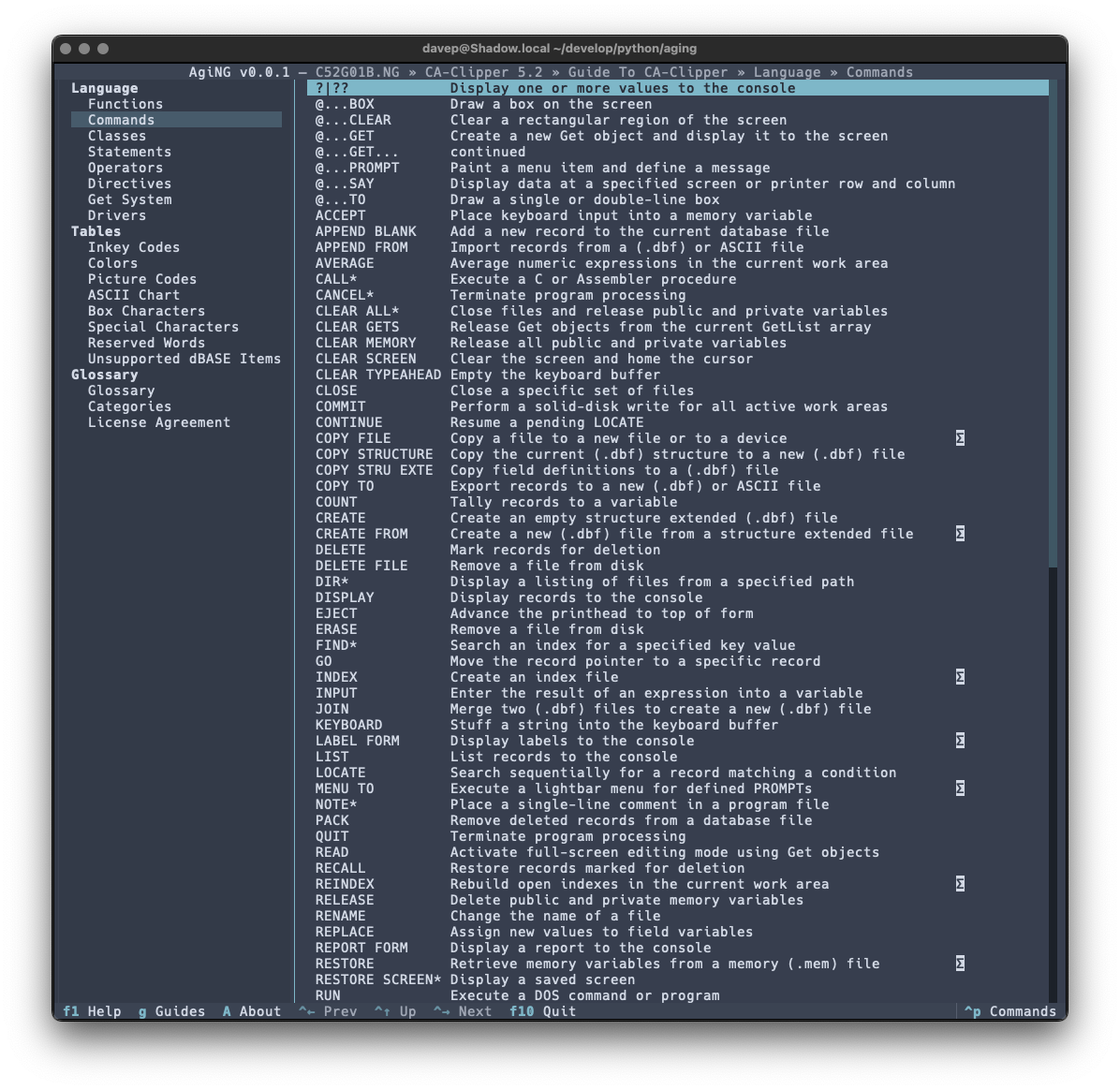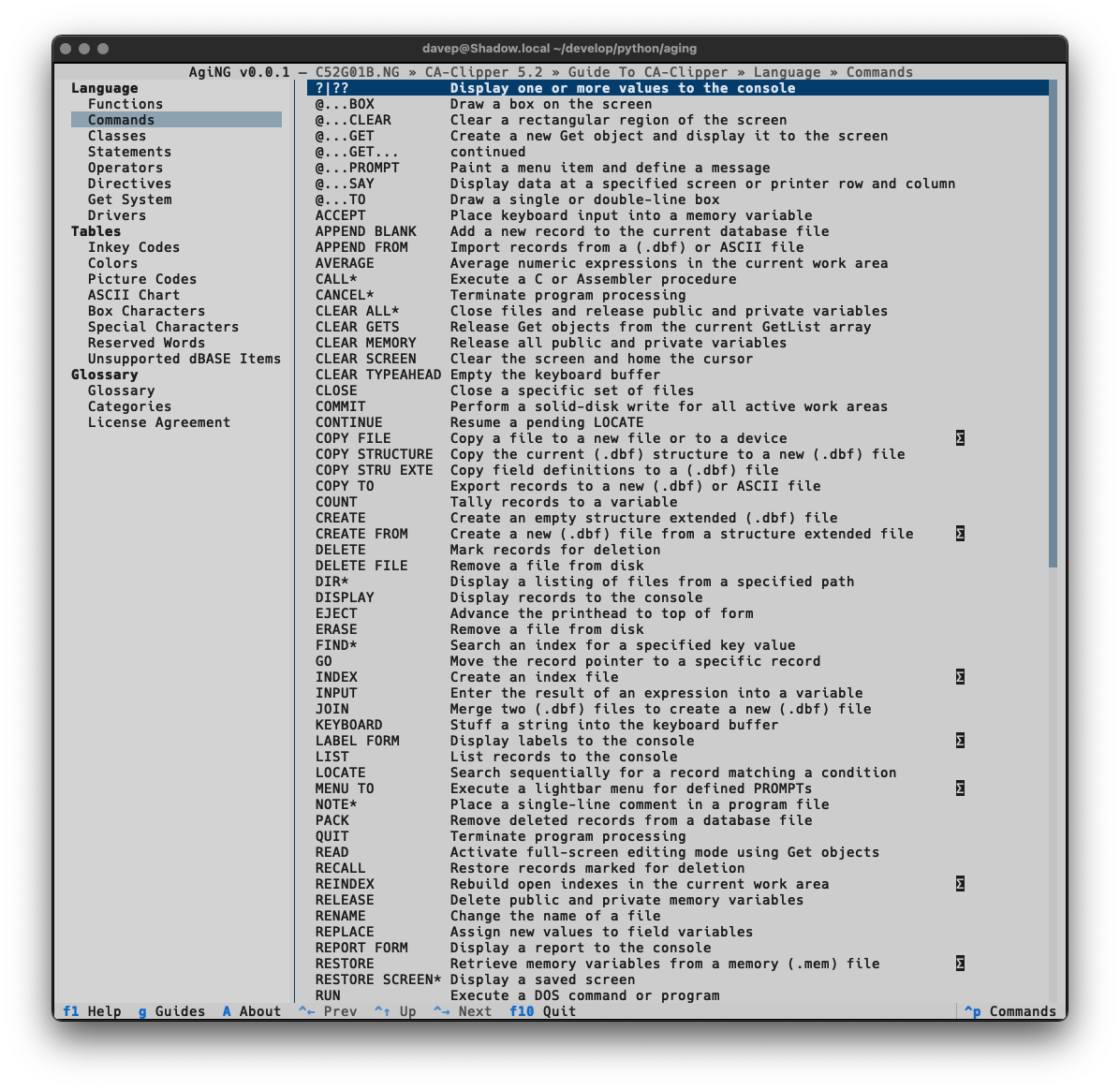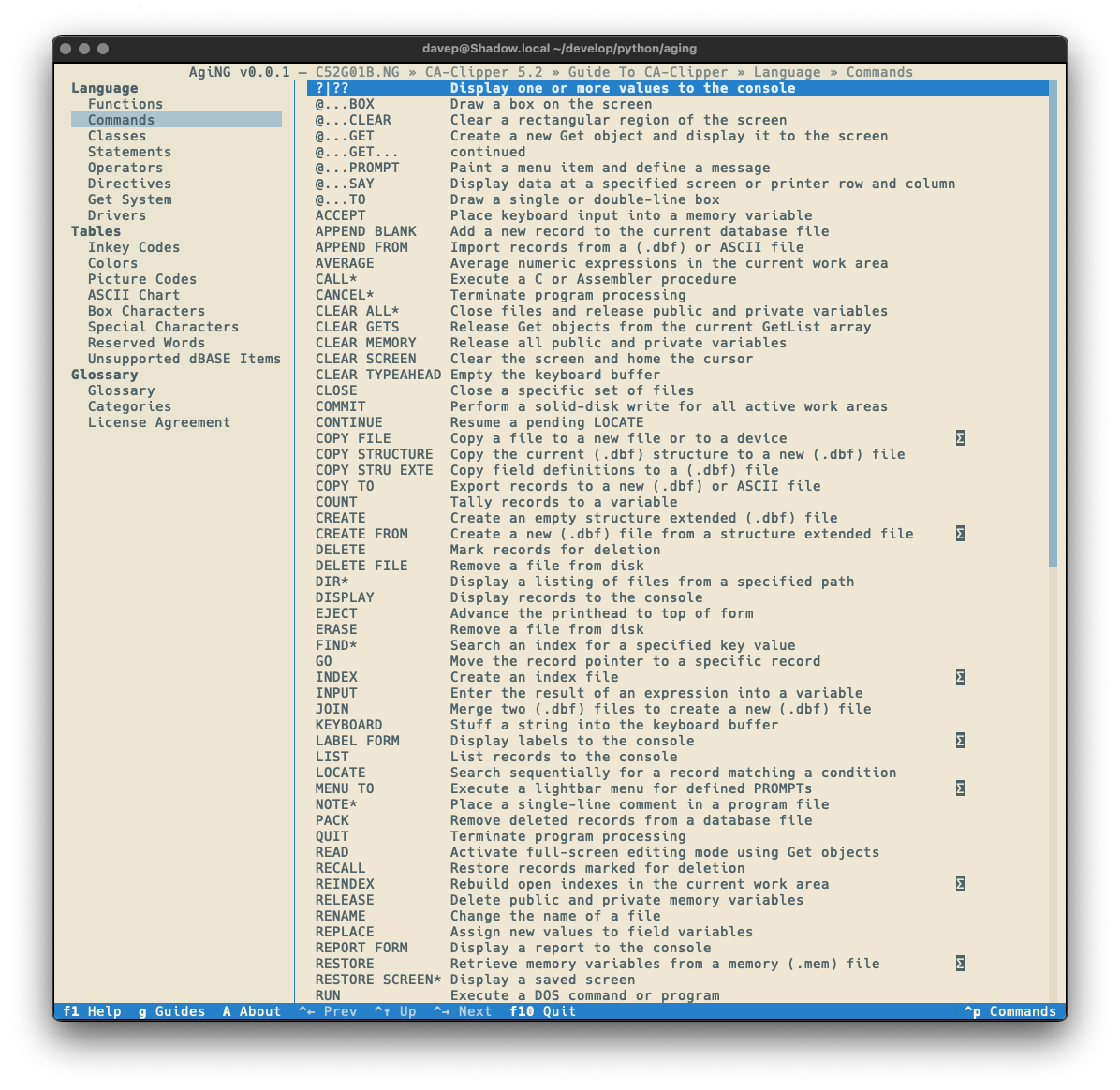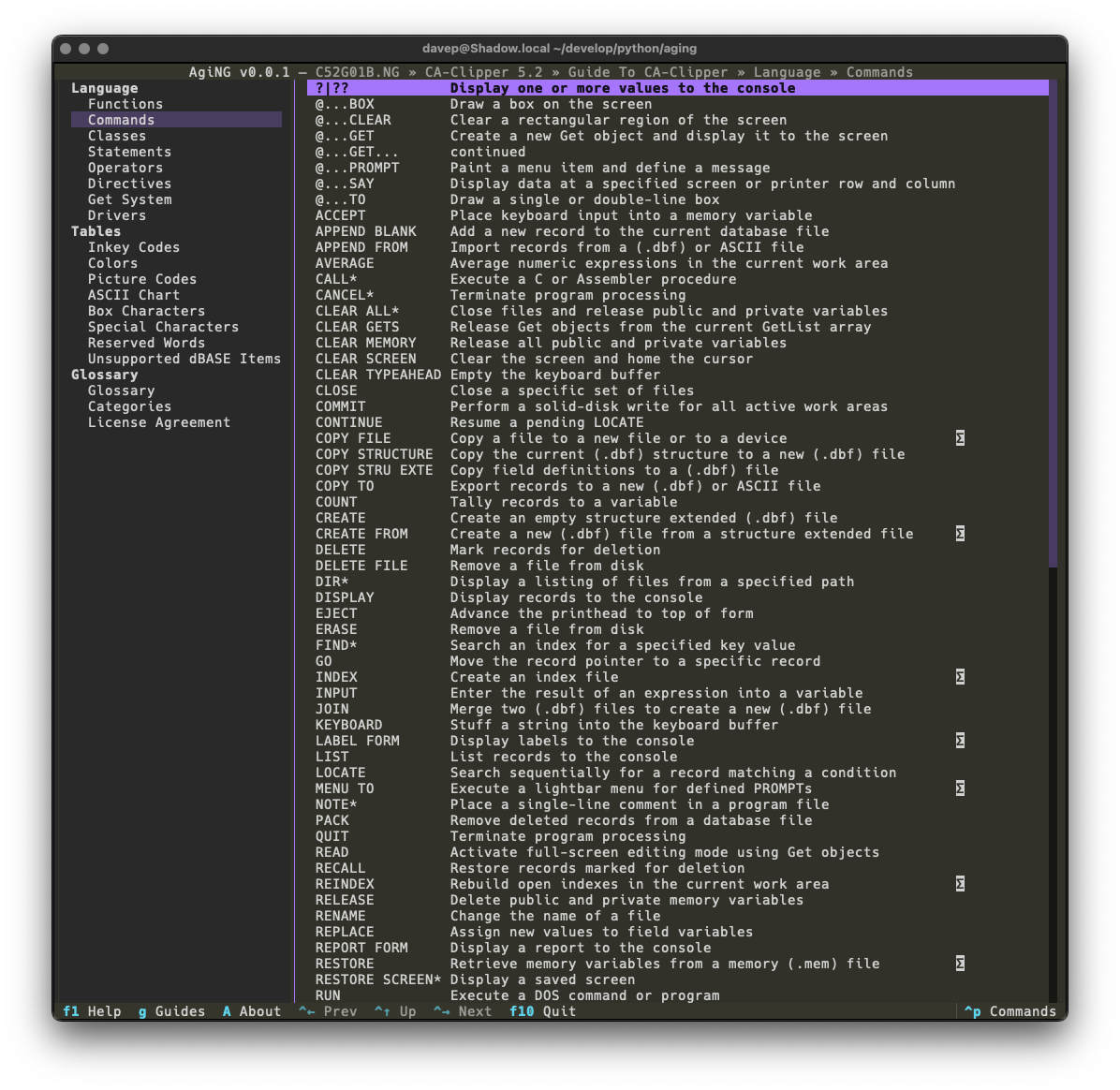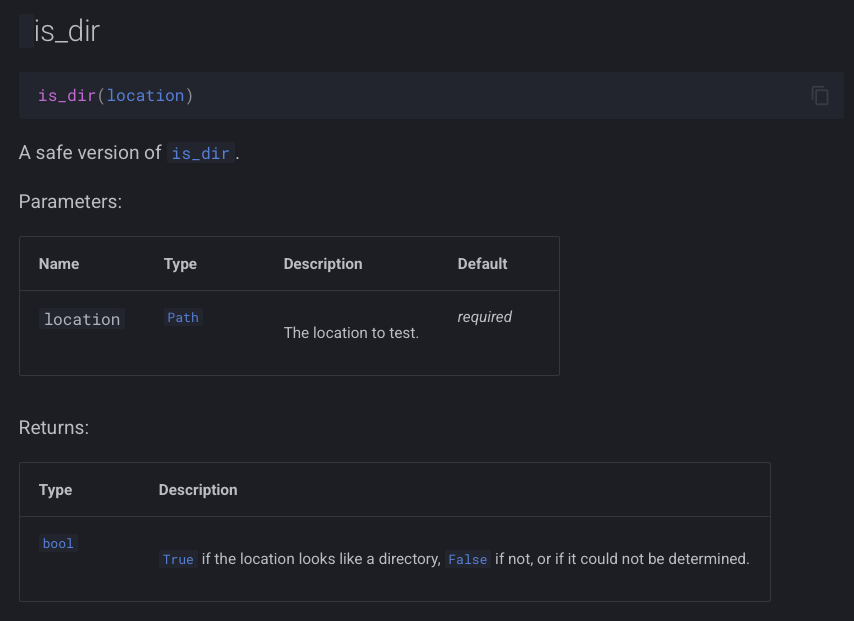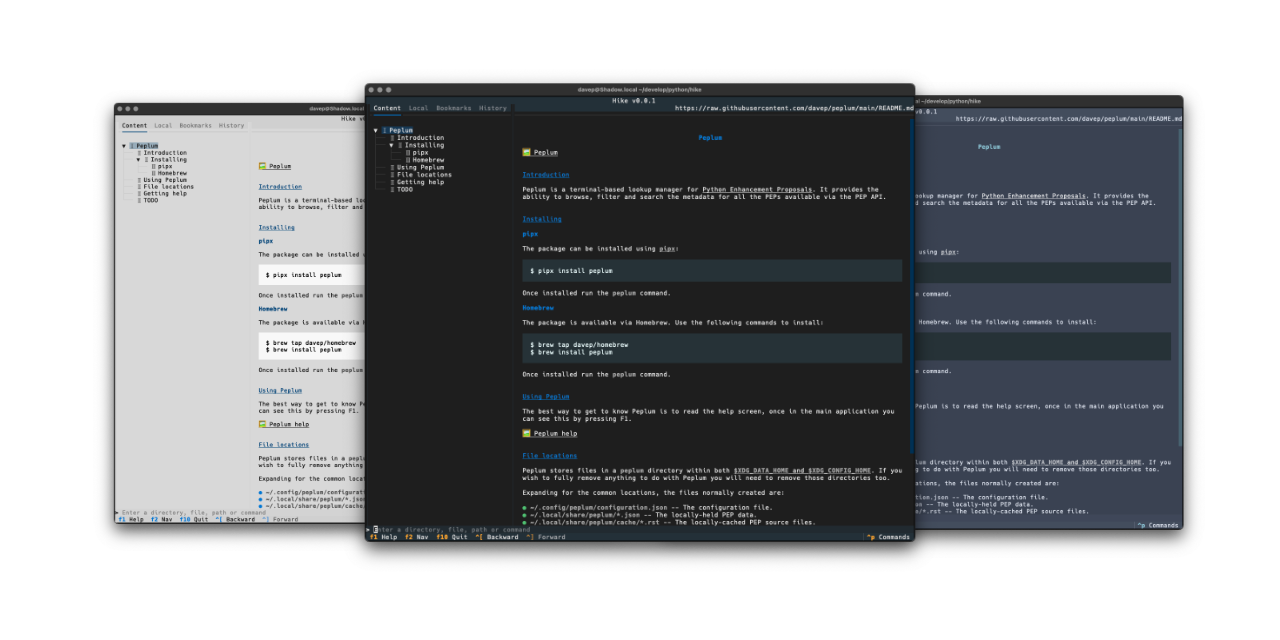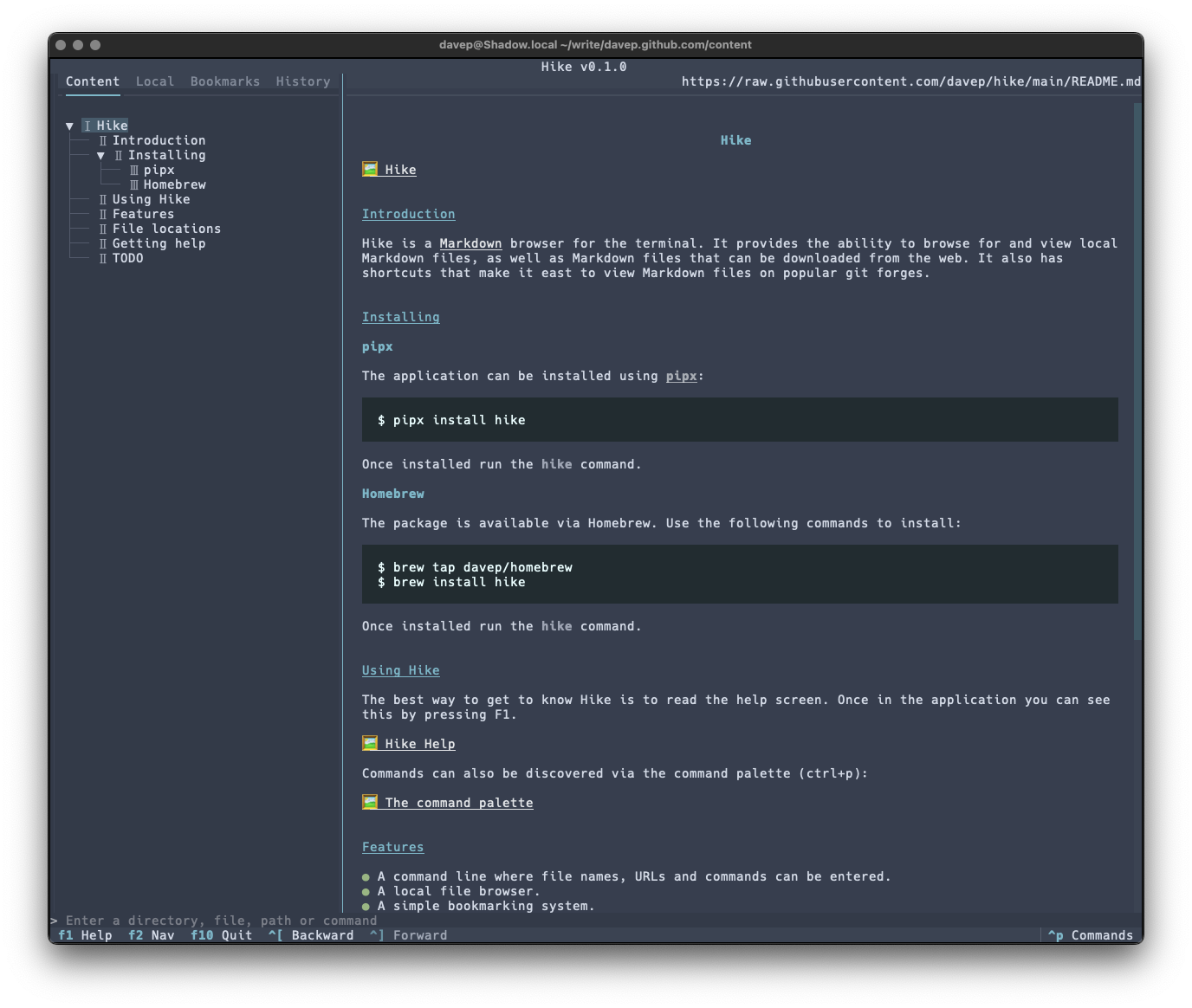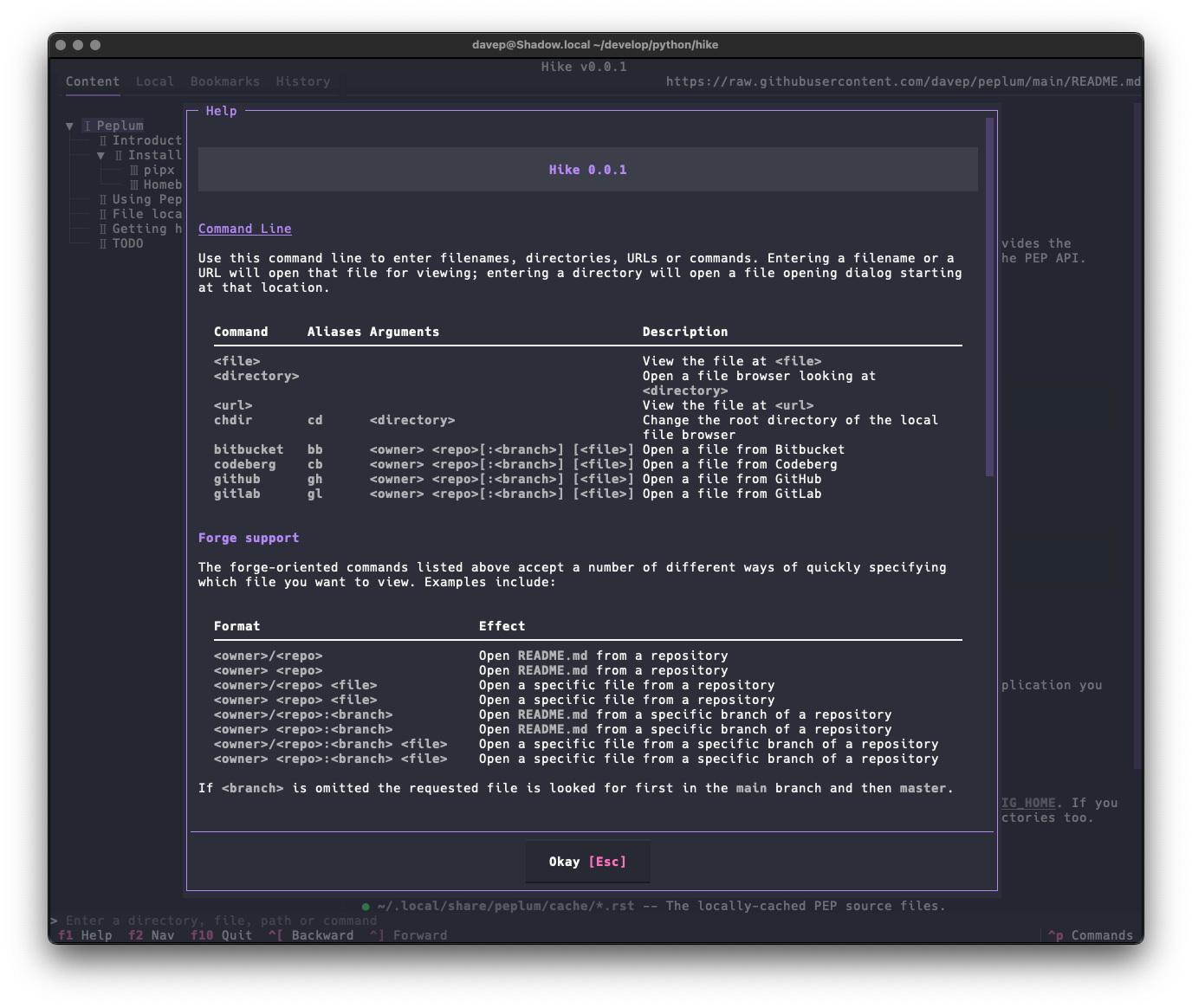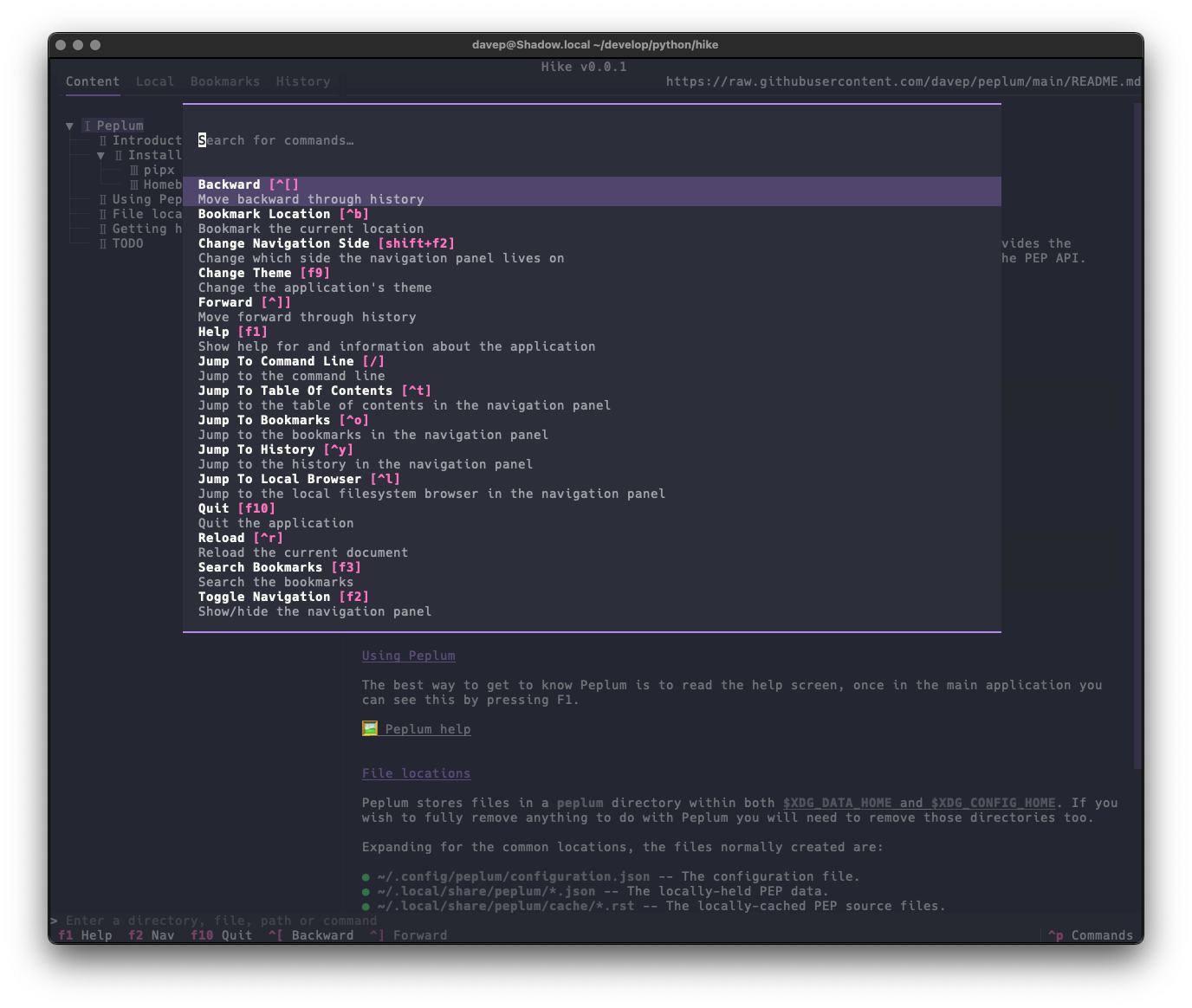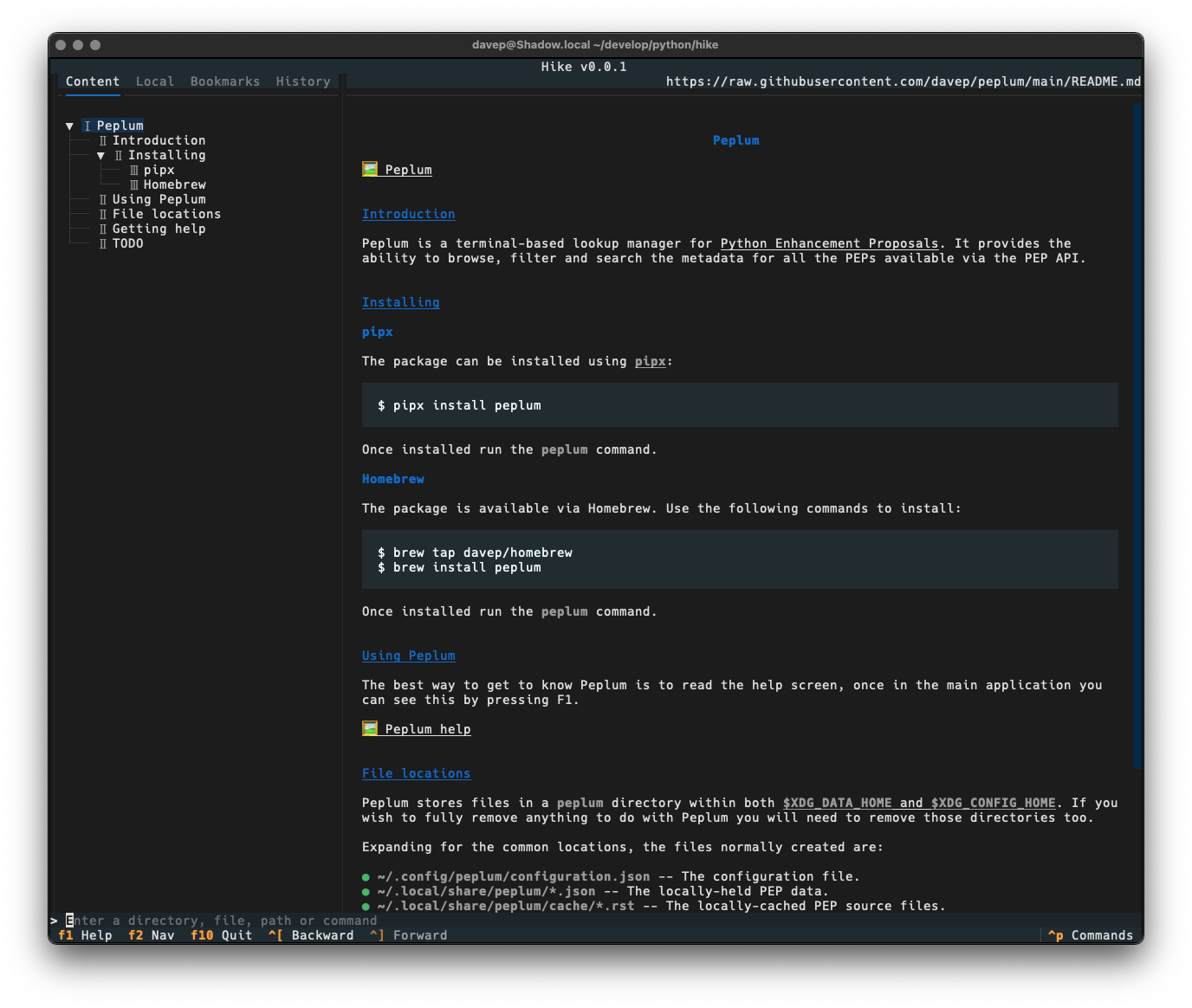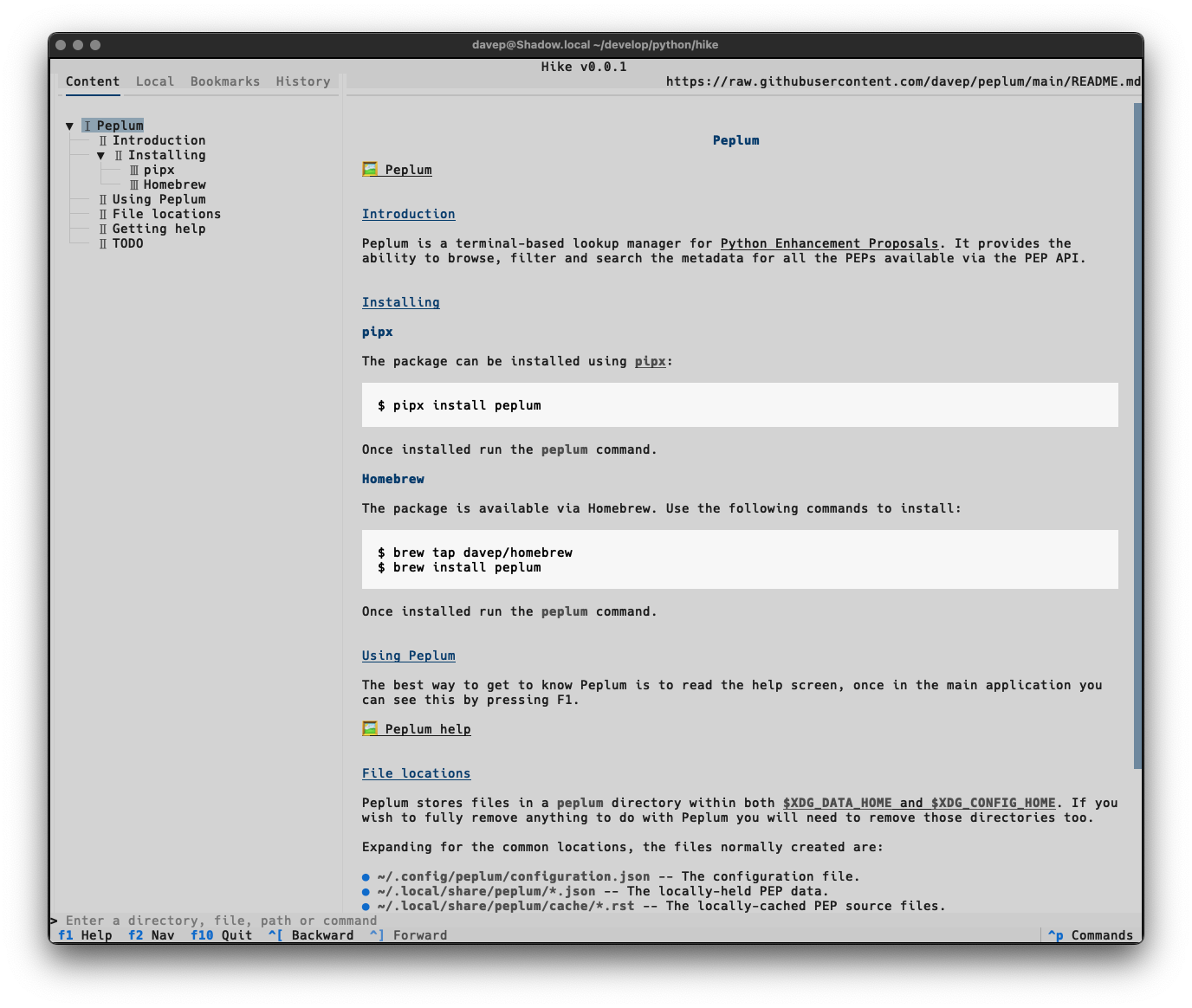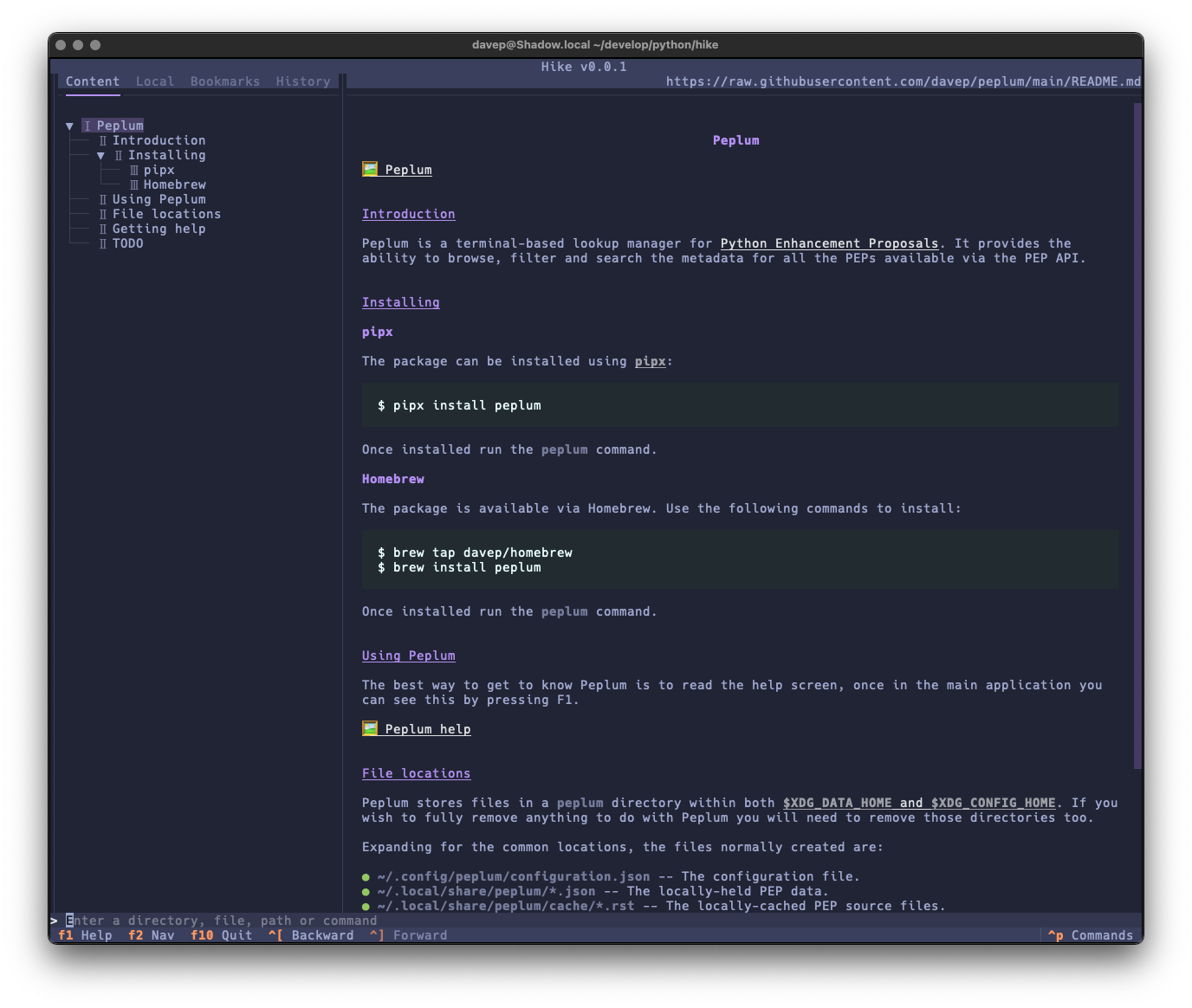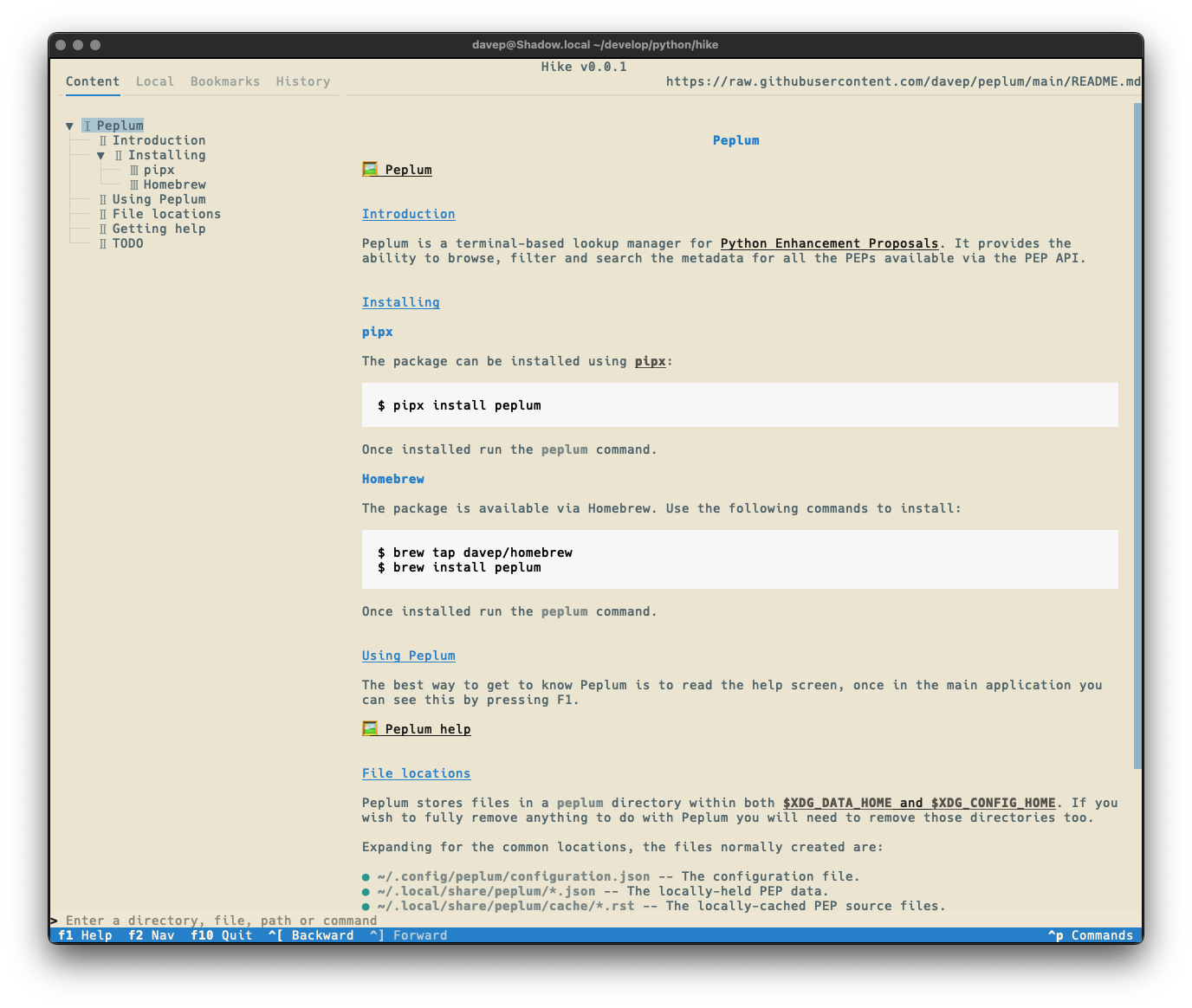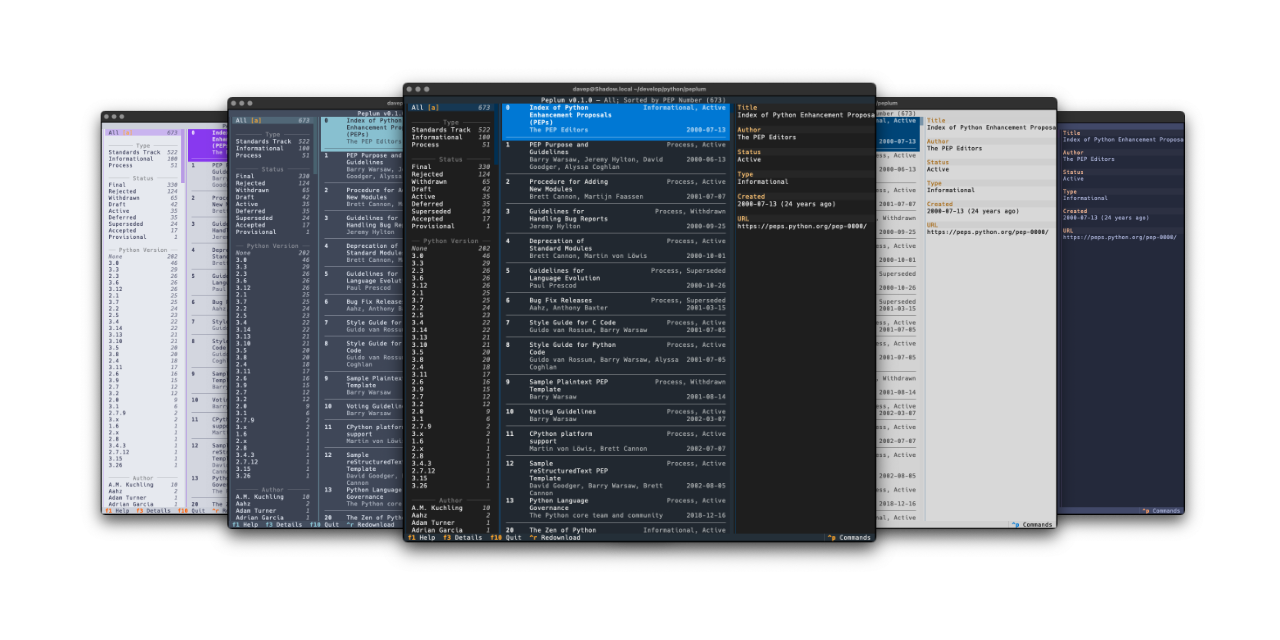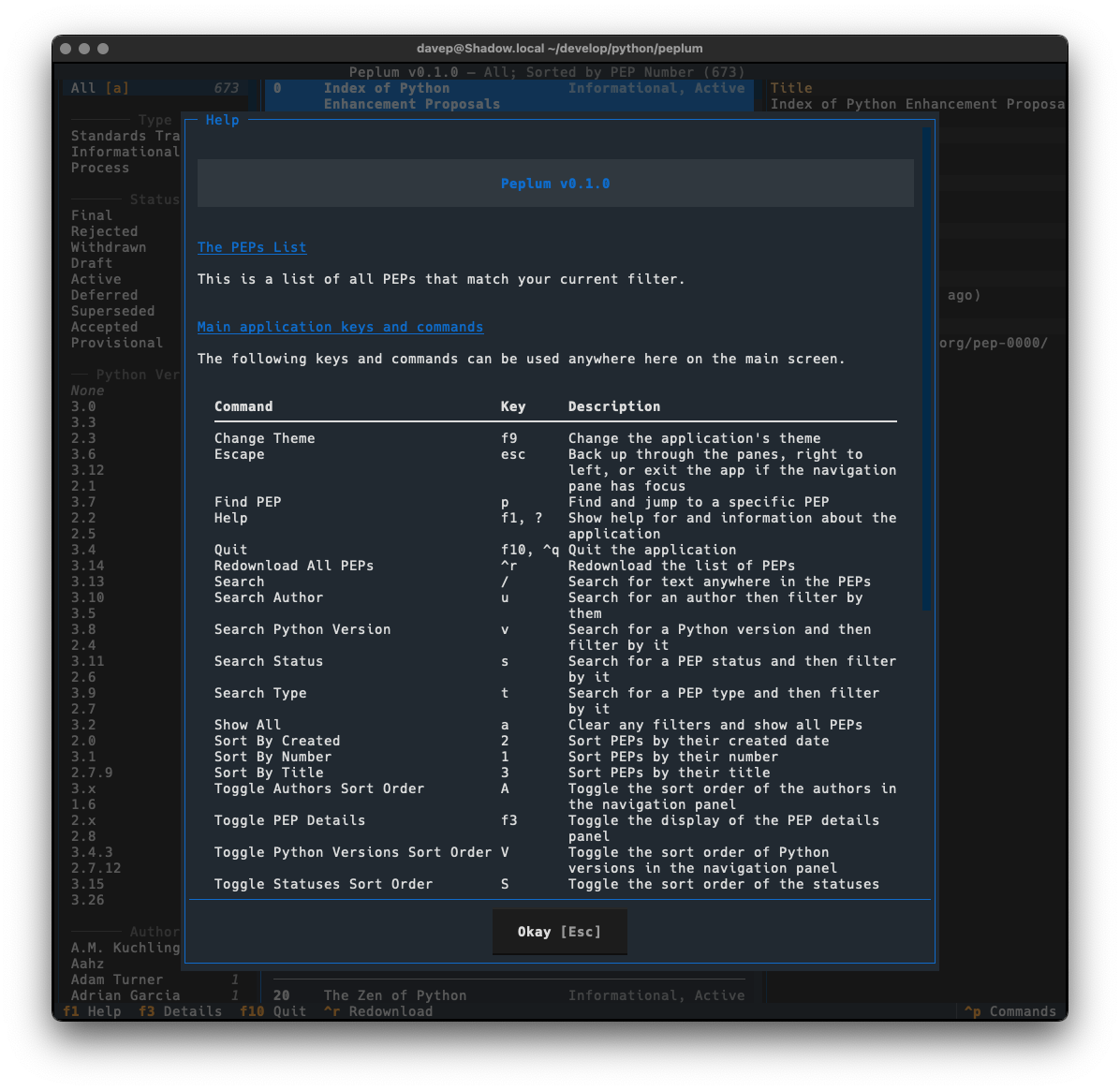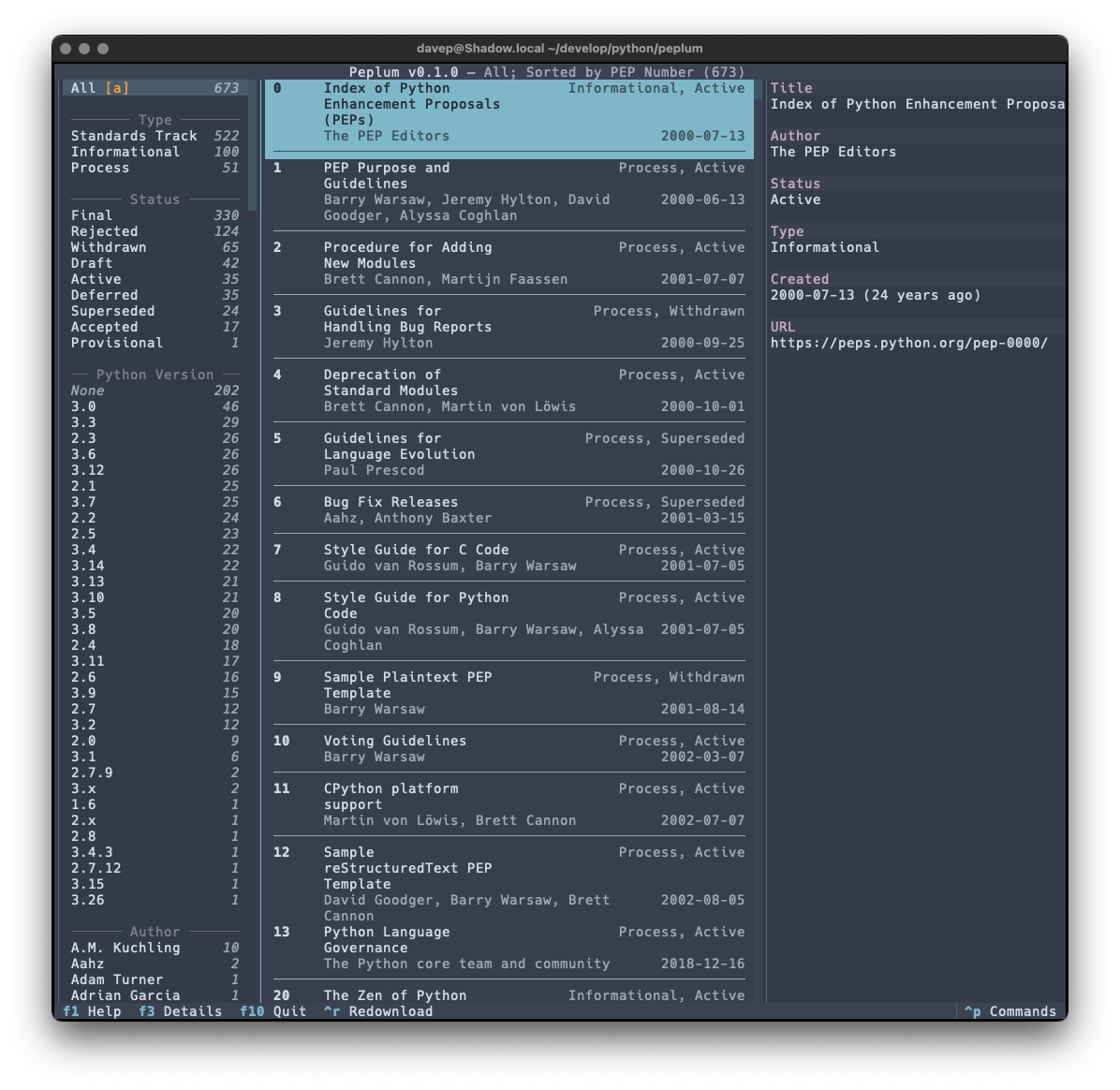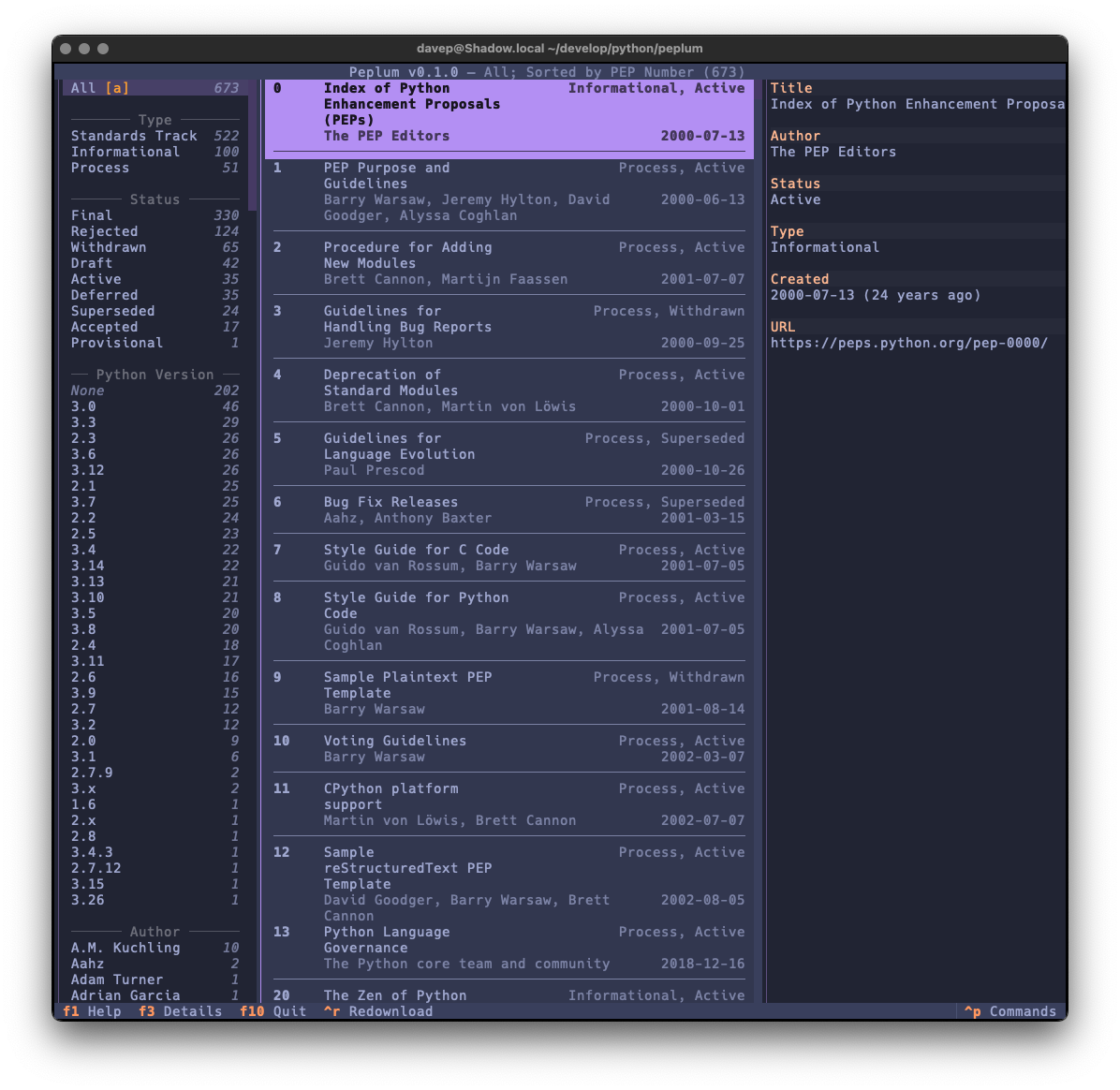A Norton Guide collection
Posted on 2025-12-12 17:00 +0000 in Coding • Tagged with Norton Guide, history • 3 min read
As I've mentioned a few times on this blog, I've long had a bit of a thing for writing tools for reading the content of Norton Guide files. I first used Norton Guides back in the early 1990s thanks to the release of Clipper 5, and later on in that decade I wrote my first couple of tools to turn guides into HTML (and also wrote a Windows-based reader, then rewrote it, wrote one for OS/2, wrote one for GNU/Linux, and so on).
One tool (ng2html) got used by a few
sites on the 'net to publish all sorts of guides, but it's not something I
ever got into doing myself. Amusingly, from time to time, because I had a
credit on those sites as the author of the conversion tool, I'd get random
emails from people hoping I could help them with the topic of whatever guide
they'd been reading. Sometimes I could help, often not.
From what I've recently been told two of the biggest sites for this sort of thing (they might even have been the same site, or one a copy of the other, I didn't really dive into them too much and wasn't sure who was behind them anyway) have long since gone offline. This means that, as far as I can tell, a huge collection of knowledge from the DOS days is a lot harder to get to, if it hasn't disappeared altogether.
This makes me kind of sad.
Edit to add: digging a little, one of the sites was called
www.clipx.netand it looks to have long-since gone offline. It is on archive.org though. The other wasx-hacker.orgwhich, digging a wee bit more, seems to have been a copy of what was on clipx.net.
So I had an idea: having recently polished up my replacement for ng2html, why not use that to build my own site that publishes the guides I have? So I set about it.
There's one wrinkle to this though. While the other sites seemed to just publish every NG file they got their hands on, I'd prefer to try and do it like this: publish every guide I have in my collection that I have a licence or permission to publish; or as near as possible1
Given all of this, norton-guides.davep.dev has been born. The repository that drives it is on GitHub, and I have a wiki page that lists all the guides I have that I could possibly publish, showing what I know about the copyright/licence of each one and what the publishing state is.
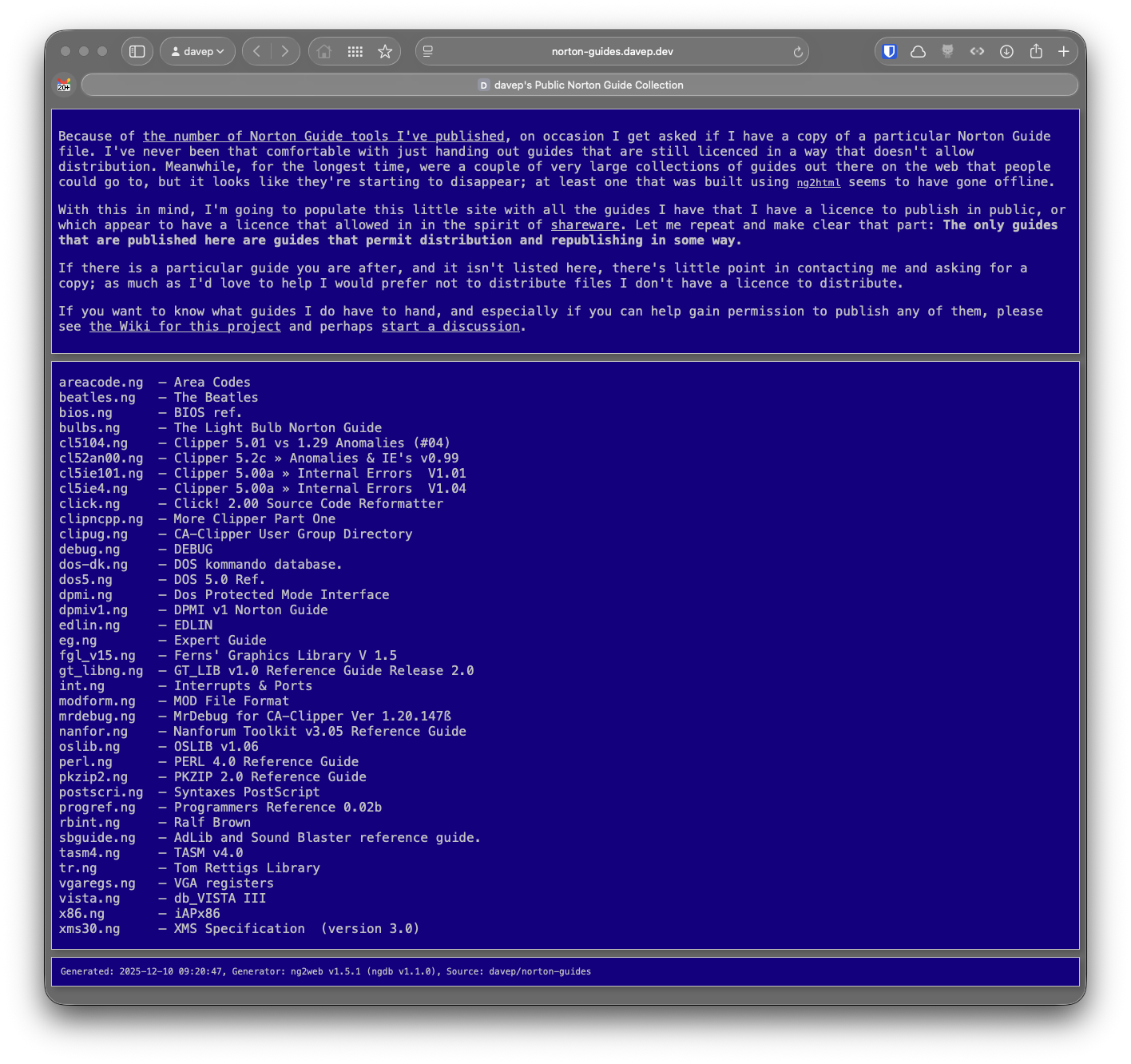
So with this, I'm putting out a call for help: if you remember the days of Norton Guide help files, if you have Norton Guide help files I don't have, and especially if you are the copyright-holder of any of these files and you can extend me the permission to open them up, or if you know the right people and can get me in touch with them, DROP ME A LINE!
I'd also love to have others join me in this... quest. So if you want to contribute to the repository and help build it up I'd also love to hear from you.
-
I will possibly be a little permissive when it comes to things that I believe contain public domain information to start with. ↩
